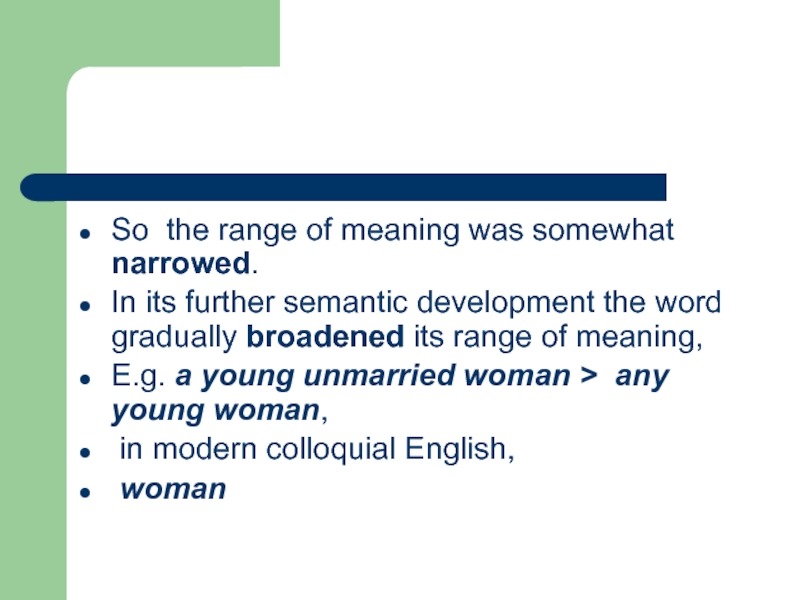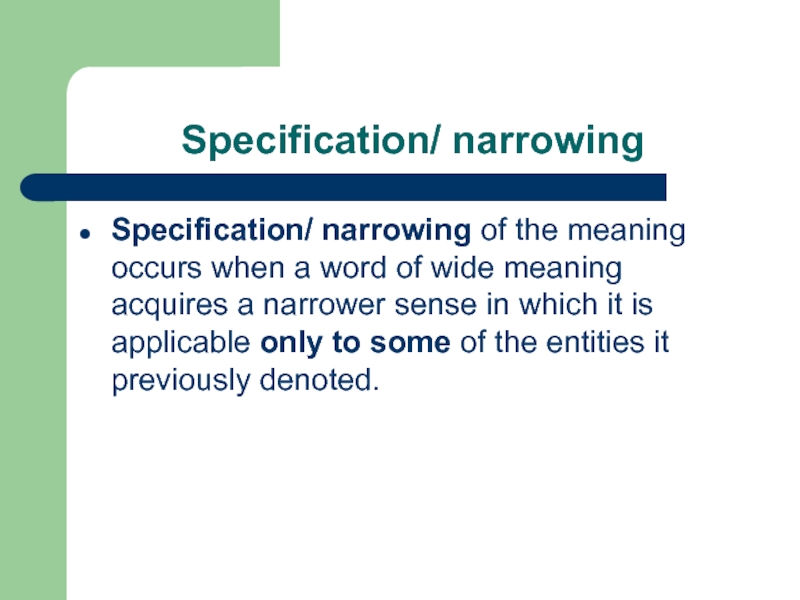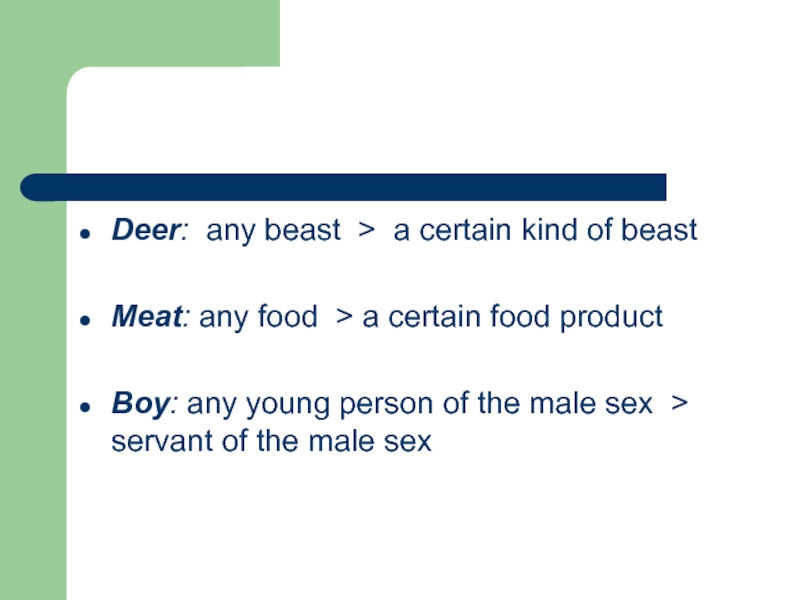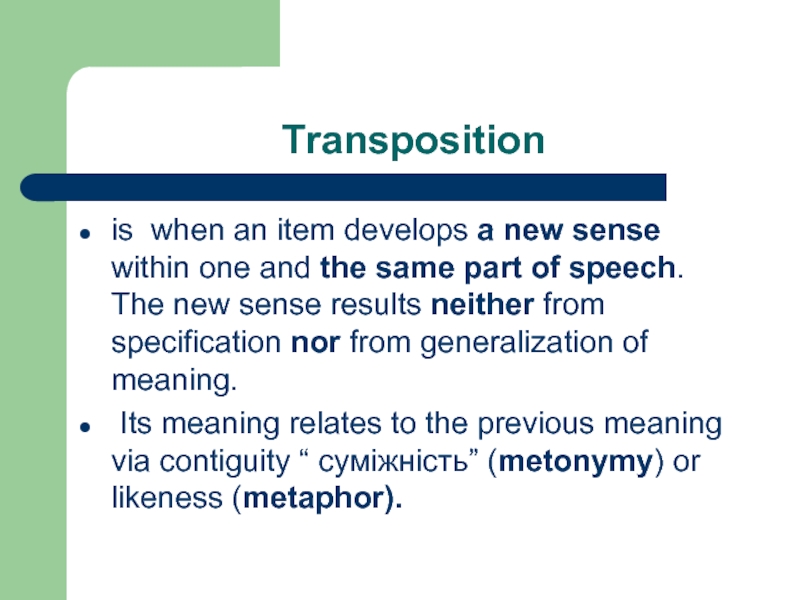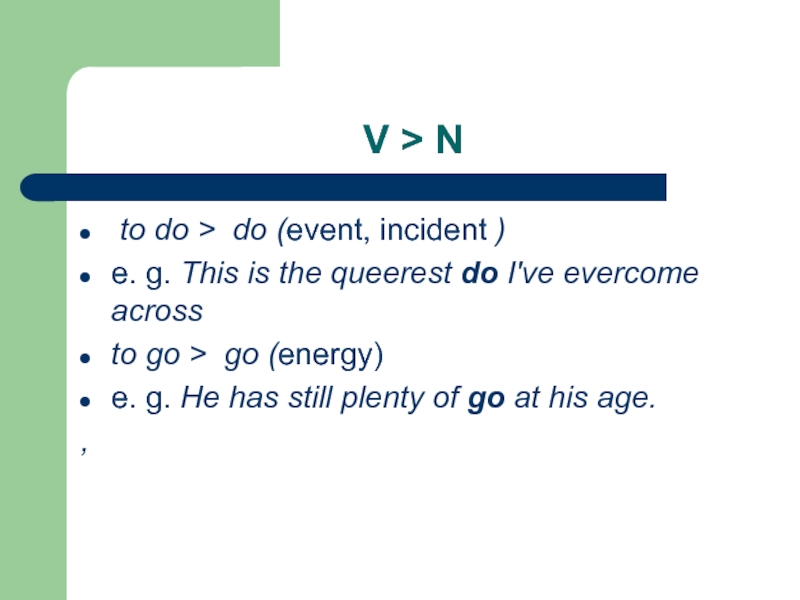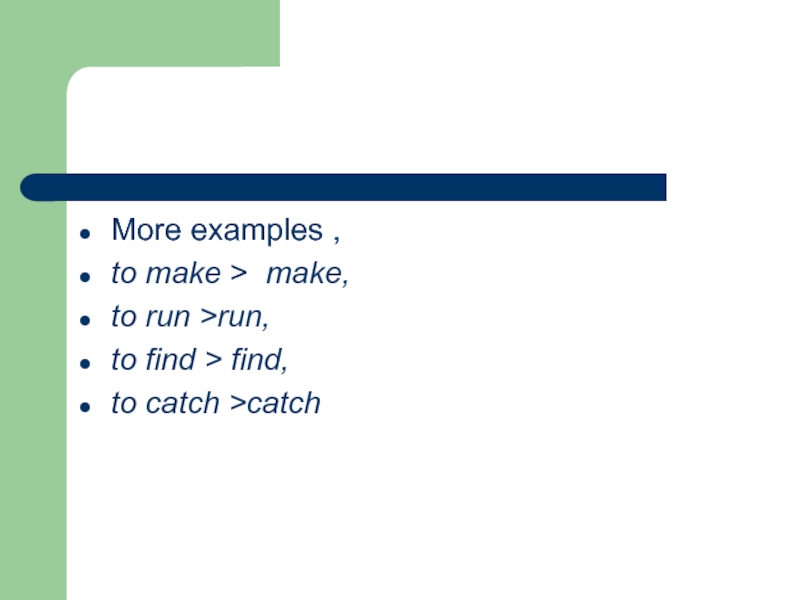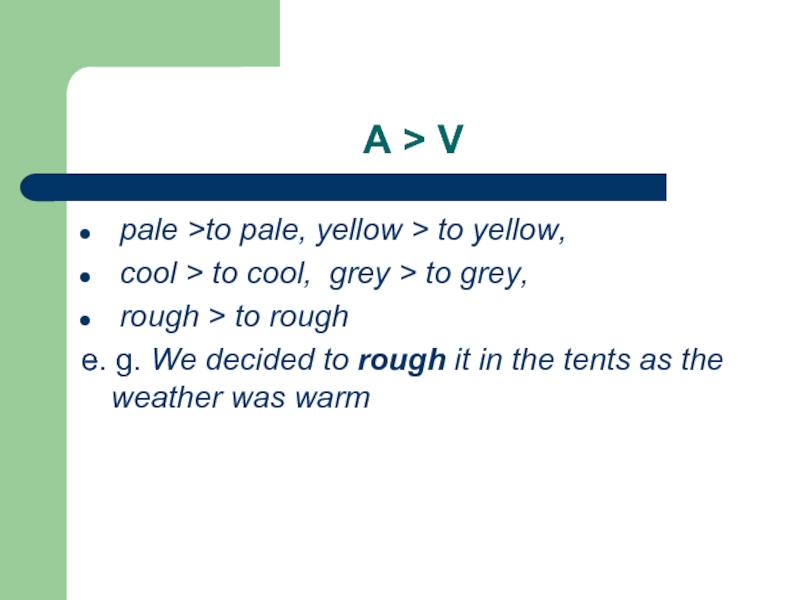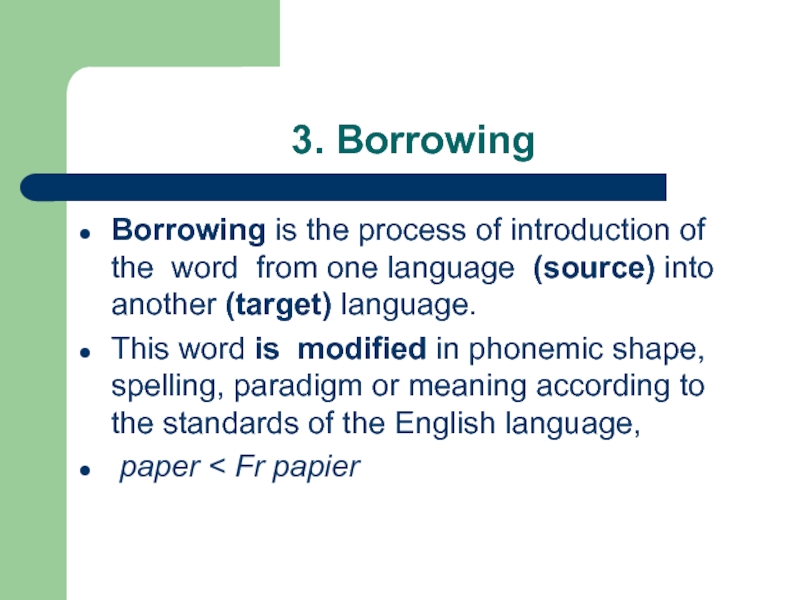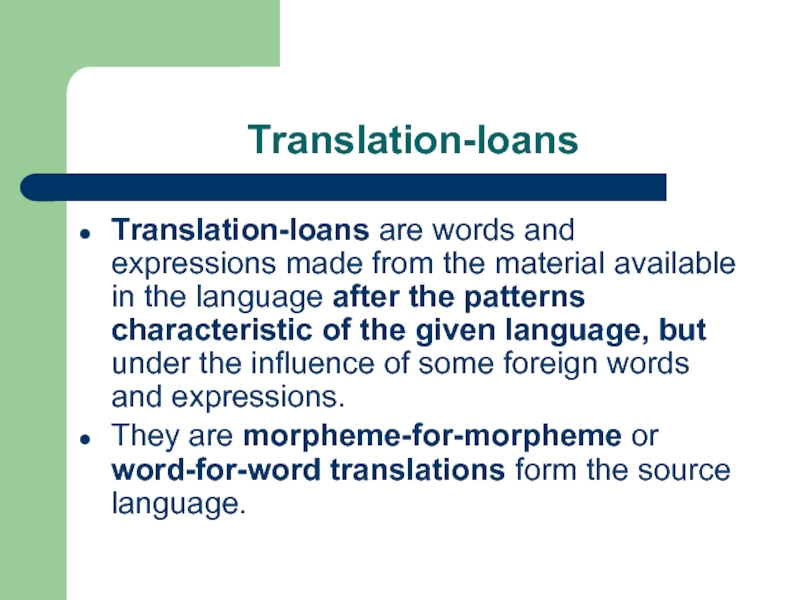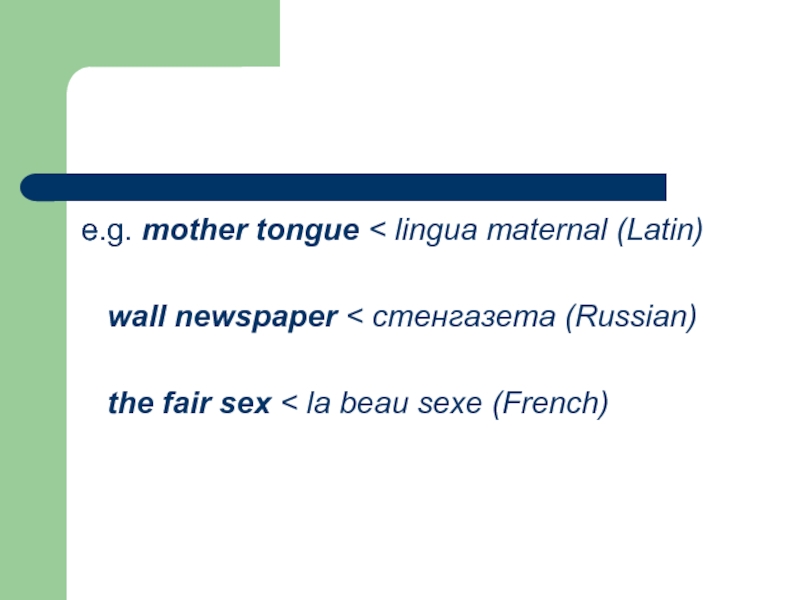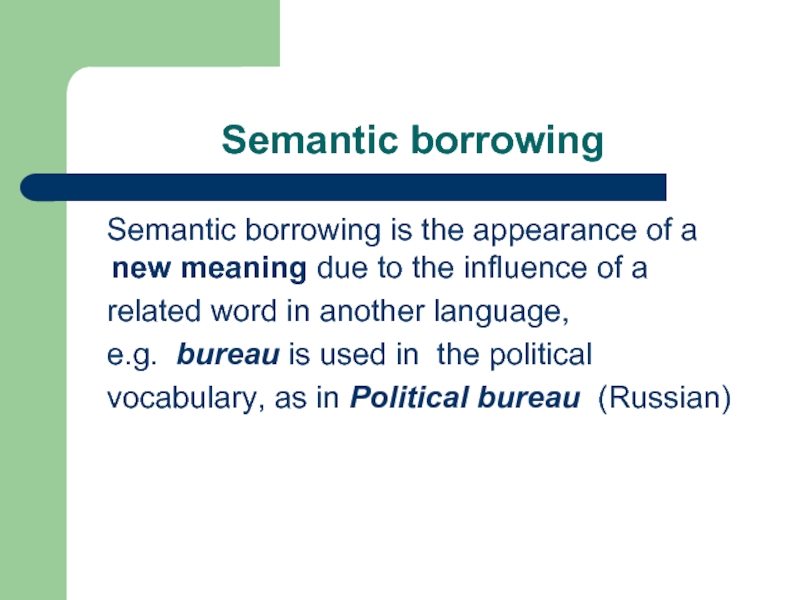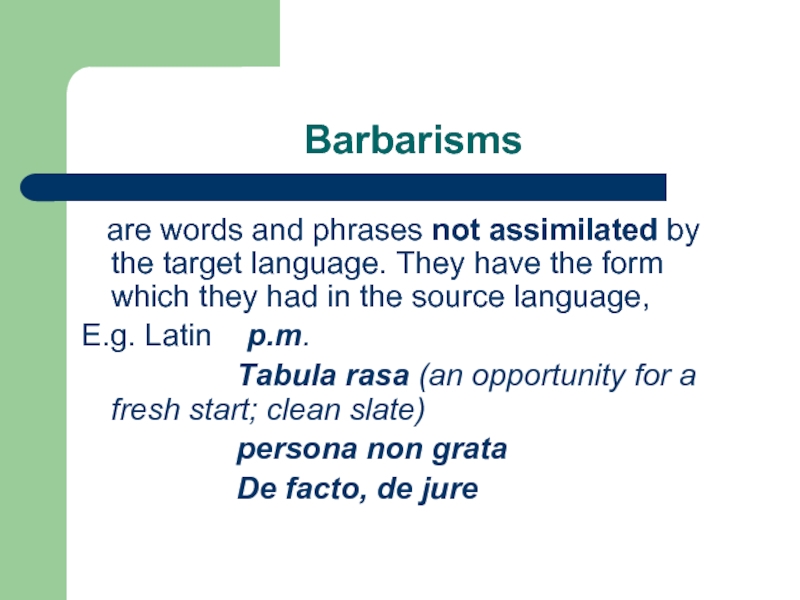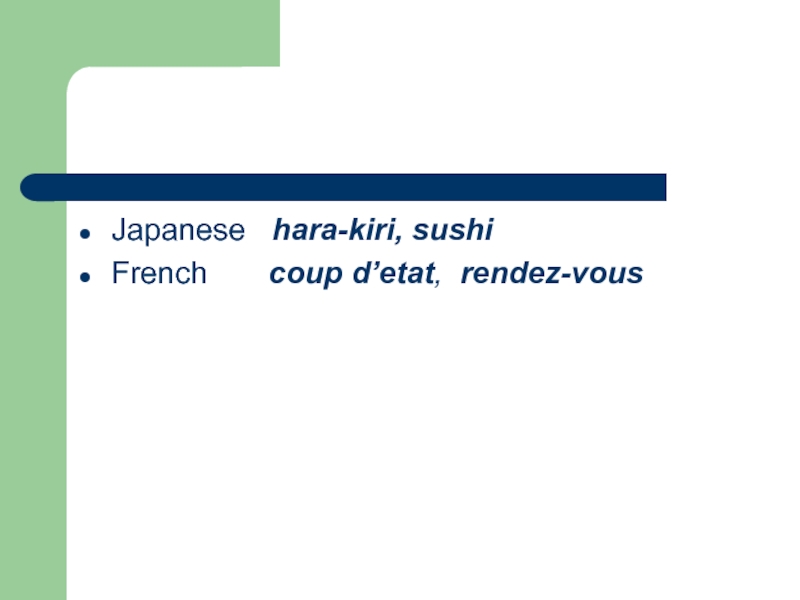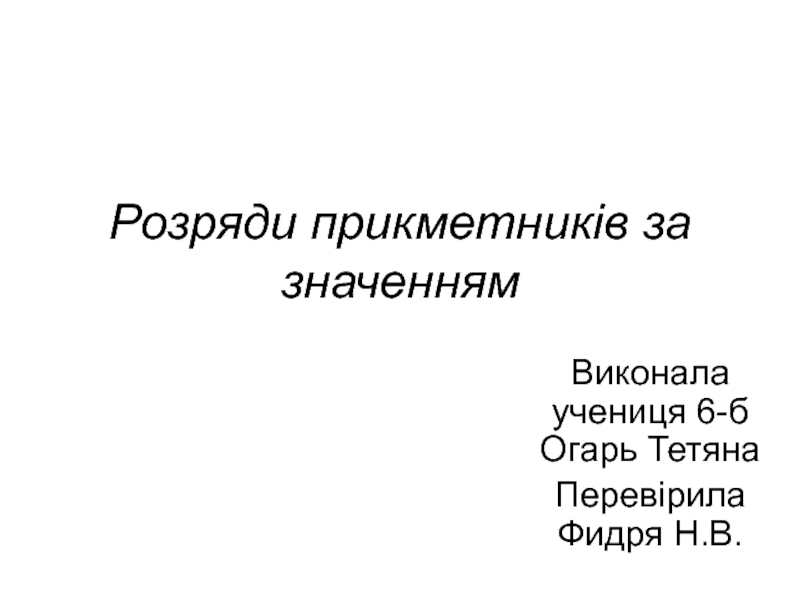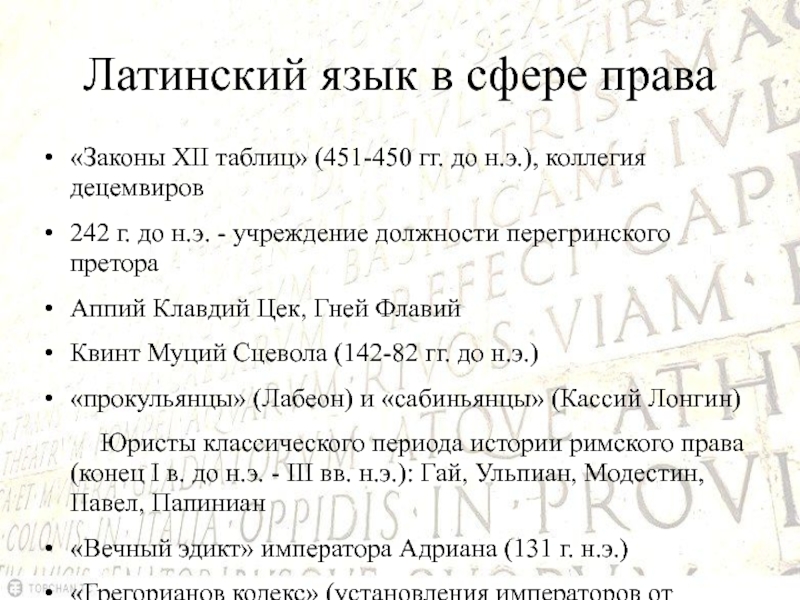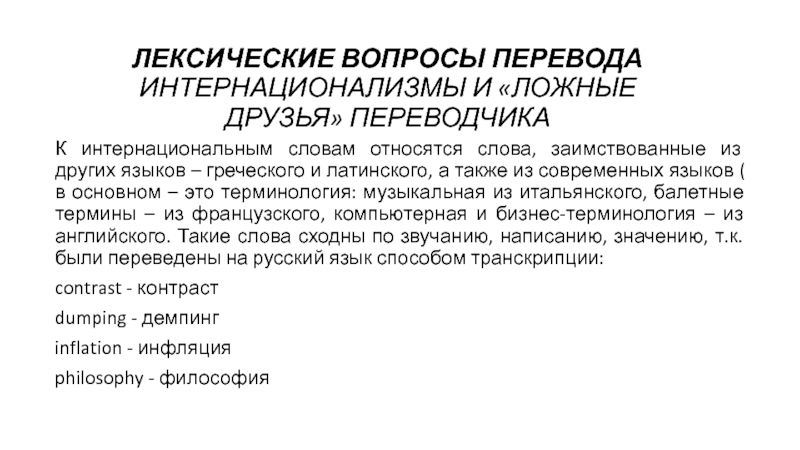- Главная
- Разное
- Дизайн
- Бизнес и предпринимательство
- Аналитика
- Образование
- Развлечения
- Красота и здоровье
- Финансы
- Государство
- Путешествия
- Спорт
- Недвижимость
- Армия
- Графика
- Культурология
- Еда и кулинария
- Лингвистика
- Английский язык
- Астрономия
- Алгебра
- Биология
- География
- Детские презентации
- Информатика
- История
- Литература
- Маркетинг
- Математика
- Медицина
- Менеджмент
- Музыка
- МХК
- Немецкий язык
- ОБЖ
- Обществознание
- Окружающий мир
- Педагогика
- Русский язык
- Технология
- Физика
- Философия
- Химия
- Шаблоны, картинки для презентаций
- Экология
- Экономика
- Юриспруденция
Word-Stock Formation презентация
Содержание
- 1. Word-Stock Formation
- 2. Outline Morphological word formation: Affixation (suffixation, prefixation, suffixation-and-prefixation). Back formation. Abbreviation.
- 3. Compounding (compound-derived words, abbreviated compounds, acronyms, initialisms). Blending.
- 4. 2.Semantic word-formation. Generalization of meaning. Specification of meaning. Transposition. Conversion.
- 5. 3. Borrowing: Borrowings proper. Translation loans. Semantic loans. Barbarisms.
- 6. Morphological word formation is the formation of
- 7. Prefixation is adding a prefix at
- 8. Suffixation-and-prefixation is adding of a suffix
- 9. (2) Back formation is formation of
- 10. Baby-sitter – to baby-sit Forced landing
- 11. (3) Abbreviation (clipping, shortening, contraction) is
- 12. Omission of the last part of
- 13. (4) Compounding is deriving a new
- 14. Compounds are not homogeneous in structure.
- 15. In neutral compounds the
- 16. Subtypes of neutral compounds Simple neutral
- 17. The productivity of this
- 18. Nonce-words are coined on this pattern
- 19. attention getter, go-getter (a
- 20. Contracted compounds have a shortened (abbreviated)
- 21. Acronyms Acronyms are words that are composed
- 22. AIDS (acquired immune deficiency syndrome) Scuba (self-contained underwater breathing apparatus)
- 23. Initialisms Initialisms are an extreme kind of
- 24. USA BBC MP UNO gf (girl friend)
- 25. Morphological compounds Morphological compounds are few in
- 26. e. g. Anglo-Saxon,
- 27. Syntactic compounds Syntactic compounds are
- 28. e.g.
- 29. go-between
- 30. e.g.Randy managed to weave through a
- 31. (5) Blending is a special type
- 32. e.g. slimnastics (slim + gymnastics)
- 33. Reaganomics (Reagan + economics) workaholic
- 34. A compound vs a word-combination
- 35. The graphic criterion In many cases we
- 36. The semantic criterion The semantic criterion is
- 37. The phonetic criterion The phonetic criterion is
- 38. But there can be a double
- 39. Morphological and syntactic criteria In word groups
- 40. Conclusion only several criteria:semantic, morphological, syntactic, phonetic,
- 41. Degree of semantic independence From the point
- 42. Coordinative compounds In coordinative compounds the two
- 43. They fall into three groups: (1)
- 44. (2) Reduplicative compounds Reduplicative compounds are
- 45. (3) Phonetically variated rhythmic twin forms Compounds
- 46. or rhyme by varying the
- 47. Subordinative compounds In subordinative compounds the components
- 48. The second IC is the semantically
- 49. From the functional POV compounds are
- 50. Compounds can be found
- 51. Compound nouns N+N
- 52. Compound adjectives N + V-ing law-breaking, horseracing
- 53. N + V-ed crisis-ridden,
- 54. Compound adverbs, pronouns are represented by
- 55. V + Prep A very characteristic development
- 56. V + Prep Verbs of the
- 57. Some scholars call them verb-adverb
- 58. 2.Semantic word-formation is the formation of new
- 59. Manuscript: ‘smth handwritten’ > ‘any author’s
- 60. Pipe: "a musical wind instrument“ >
- 61. So the range of meaning was
- 62. Specification/ narrowing Specification/ narrowing of the meaning
- 63. Deer: any beast > a certain
- 64. Transposition is when an item develops a
- 65. Leg: part of a body >
- 66. Conversion Conversion is a process of word-formation
- 67. N > V N > V
- 68. V > N to do >
- 69. More examples , to make >
- 70. A > V pale >to pale,
- 71. Conversion may be accompanied by the
- 72. 3. Borrowing Borrowing is the process of
- 73. Translation-loans Translation-loans are words and expressions made
- 74. e.g. mother tongue < lingua maternal
- 75. Semantic borrowing Semantic borrowing is
- 76. Barbarisms are words and phrases
- 77. Japanese hara-kiri, sushi French coup d’etat, rendez-vous
Слайд 2Outline
Morphological word formation:
Affixation (suffixation, prefixation, suffixation-and-prefixation).
Back formation.
Abbreviation.
Слайд 4
2.Semantic word-formation.
Generalization of meaning.
Specification of meaning.
Transposition.
Conversion.
Слайд 6Morphological word formation
is the formation of the words with the help
of combining morphemes.
(1) Affixation is adding a suffix or a prefix or both to the word stem.
Suffixation is adding a suffix to the end of a stem,
e.g. employee, equipment, threefold, criticize
(1) Affixation is adding a suffix or a prefix or both to the word stem.
Suffixation is adding a suffix to the end of a stem,
e.g. employee, equipment, threefold, criticize
Слайд 7
Prefixation is adding a prefix at the beginning of the word
stem,
e.g. unpleasant, enroll, foresee, overestimate subdivide, impossible.
e.g. unpleasant, enroll, foresee, overestimate subdivide, impossible.
Слайд 8
Suffixation-and-prefixation is adding of a suffix and prefix to the word
stem,
e.g. unspeakable, disconnection, impossibility overproduction.
e.g. unspeakable, disconnection, impossibility overproduction.
Слайд 9
(2) Back formation is formation of a new word from an
older and more complex form,
e.g. beggar – to beg
editor – to edit
television – to televise
rover -- to rove
peddlar – to peddle
e.g. beggar – to beg
editor – to edit
television – to televise
rover -- to rove
peddlar – to peddle
Слайд 10
Baby-sitter – to baby-sit
Forced landing – to force land
Blood-transfusion – to
blood-transfuse
Finger printings – to fingerprint
Finger printings – to fingerprint
Слайд 11
(3) Abbreviation (clipping, shortening, contraction) is deriving the new word by
cutting off a part of the initial word.
Omission of the beginning of the word is called aphaeresis /e’fierisis/ (fore-clipping),
e.g. telephone – phone
refrigerator – fridge
aeroplane -- plane
Omission of the beginning of the word is called aphaeresis /e’fierisis/ (fore-clipping),
e.g. telephone – phone
refrigerator – fridge
aeroplane -- plane
Слайд 12
Omission of the last part of the word is called apocope
/ə’pokəpI/ (back-clipping),
e.g. laboratory – lab
doctor – doc
dormitory – dorm
camera – cam
ad – advertisement
e.g. laboratory – lab
doctor – doc
dormitory – dorm
camera – cam
ad – advertisement
Слайд 13
(4) Compounding is deriving a new word that consists of a
combination of stems,
e.g. dark-grey, sunlit, broadcast, whitewash , Anglo-Saxon, into, anything.
Compounding is one of the most productive types (conversion and affixation).
Compound-derived words are the words with the suffix added to the compound stem,
e.g. housekeeper, trustworthy, heart-breaking
e.g. dark-grey, sunlit, broadcast, whitewash , Anglo-Saxon, into, anything.
Compounding is one of the most productive types (conversion and affixation).
Compound-derived words are the words with the suffix added to the compound stem,
e.g. housekeeper, trustworthy, heart-breaking
Слайд 14
Compounds are not homogeneous in structure.
Traditionally three types are distinguished: neutral,
morphological and syntactic.
Слайд 15
In neutral compounds the process of compounding is realized
without any
linking elements by a mere juxtaposition of two stems,
e.g. blackbird, shop-window, sunflower, bedroom
linking elements by a mere juxtaposition of two stems,
e.g. blackbird, shop-window, sunflower, bedroom
Слайд 16 Subtypes of neutral compounds
Simple neutral compounds: they consist of simple
affixless stems.
Compounds which have affixes in their structure are called derived or derivational compounds,
e.g. absent-mindedness, blue-eyed, golden-haired, broadshouldered, film-goer, music-lover
Compounds which have affixes in their structure are called derived or derivational compounds,
e.g. absent-mindedness, blue-eyed, golden-haired, broadshouldered, film-goer, music-lover
Слайд 17
The productivity of this type is confirmed
by
a considerable number of comparatively recent formations,
e.g. teenager, babysitter, fourseater ("a car or a boat with four seats"), double-decker
("a ship or bus with two decks")
e.g. teenager, babysitter, fourseater ("a car or a boat with four seats"), double-decker
("a ship or bus with two decks")
Слайд 18
Nonce-words are coined on this pattern
which is another proof of its
high productivity,
e. g. luncher-out (a person who habitually takes his lunch in restaurants and not at home),
goose-flesher (murder story)
e. g. luncher-out (a person who habitually takes his lunch in restaurants and not at home),
goose-flesher (murder story)
Слайд 20
Contracted compounds have a shortened (abbreviated) stem in their structure,
e.g. TV-set
/-program/ -show
V-day (Victory day),
G-man (Government man "FBI agent"),
T-shirt
Hbag (handbag)
V-day (Victory day),
G-man (Government man "FBI agent"),
T-shirt
Hbag (handbag)
Слайд 21Acronyms
Acronyms are words that are composed of the first letters of
some words,
e.g. NATO (North Atlantic treaty Organization)
UNESCO (United Nations Education Scientific and Cultural organization)
e.g. NATO (North Atlantic treaty Organization)
UNESCO (United Nations Education Scientific and Cultural organization)
Слайд 22
AIDS (acquired immune deficiency syndrome)
Scuba (self-contained underwater breathing apparatus)
Слайд 23Initialisms
Initialisms are an extreme kind of clipping. Only the initial letters
of the words are put together and used as words. They are pronounced with the letters of the alphabet,
e.g. AI (artificial intelligence)
BP (blood pressure)
VIP ( very important person)
e.g. AI (artificial intelligence)
BP (blood pressure)
VIP ( very important person)
Слайд 25Morphological compounds
Morphological compounds are few in number.
This type is non-productive.
It is represented by words in which two compounding stems are combined by a linking vowel or consonant,
Слайд 26
e. g. Anglo-Saxon,
Franko-Prussian,
handiwork, handicraft,
craftsmanship, spokesman, statesman.
craftsmanship, spokesman, statesman.
Слайд 27Syntactic compounds
Syntactic compounds are formed from segments of speech,
preserving in their structure numerous traces of syntagmatic relations typical of speech:
articles, prepositions, adverbs,
articles, prepositions, adverbs,
Слайд 28
e.g. lily-of-the-valley
Jack-of- all-trades
good-for-nothing
mother-in-law
sit-at-home
pick-me-up
know-all
good-for-nothing
mother-in-law
sit-at-home
pick-me-up
know-all
Слайд 30
e.g.Randy managed to weave through a maze of one-way-streets, no-left-turns,
and
no-stopping-zones.
no-stopping-zones.
Слайд 31
(5) Blending is a special type of compounding when two elements
are combined into a new word with a particular meaning.
The constituent parts are easily identifiable. Such words are called telescopic words,
The constituent parts are easily identifiable. Such words are called telescopic words,
Слайд 32
e.g. slimnastics (slim + gymnastics)
brunch
(breakfast + lunch)
smog (smoke + fog)
motel (motor + hotel)
slanguage (slang + language)
smog (smoke + fog)
motel (motor + hotel)
slanguage (slang + language)
Слайд 34A compound vs a word-combination
With the exception of the
rare morphological type compounds originate directly from word combinations and are often homonymous to them:
a tall boy — a tallboy ( a high chest of drawers made in two sections and placed one on top of the other; chest-on-chest)
a tall boy — a tallboy ( a high chest of drawers made in two sections and placed one on top of the other; chest-on-chest)
Слайд 35The graphic criterion
In many cases we cannot wholly rely on it.
The
spelling of many compounds can be varied even within the same book,
solid: headmaster
with a hyphen: head-master
with a break: head master
solid: headmaster
with a hyphen: head-master
with a break: head master
Слайд 36The semantic criterion
The semantic criterion is more reliable.
Compound expresses one concept
while a word group conveys two or more concepts.
E.g. dirty-work “dishonorable proceedings” vs clean work
Слайд 37The phonetic criterion
The phonetic criterion is convincingly applicable to many compound
nouns.
There is a strong tendency for compounds to have a heavy stress on the first syllable,
‘blackboard,‘blackbird
‘honeymoon, ‘doorway
There is a strong tendency for compounds to have a heavy stress on the first syllable,
‘blackboard,‘blackbird
‘honeymoon, ‘doorway
Слайд 39Morphological and syntactic criteria
In word groups each of the constituents
is independently open to grammatical changes;
between the constituent parts of the word-group other words can be inserted while in compounds it is impossible.
between the constituent parts of the word-group other words can be inserted while in compounds it is impossible.
Слайд 40Conclusion
only several criteria:semantic, morphological, syntactic, phonetic, and graphic
can convincingly classify
a lexical unit as either a compound word or a word group.
Слайд 41Degree of semantic independence
From the point of view of degree of
semantic independence there are two types of
relationships between the immediate constituents (ICs) of compounds: coordination and subordination
relationships between the immediate constituents (ICs) of compounds: coordination and subordination
Слайд 42Coordinative compounds
In coordinative compounds the two ICs are semantically equally important
(e.g.
oak-tree, boyfriend, Anglo-American, etc.).
oak-tree, boyfriend, Anglo-American, etc.).
Слайд 43They fall into three groups:
(1) Additive compounds that are built on
stems of the independently functioning words of the same part of speech. They denote a person and an object at the same time,
e.g. Afro-Asian, secretary-stenographer,
a queenbee
e.g. Afro-Asian, secretary-stenographer,
a queenbee
Слайд 44(2) Reduplicative compounds
Reduplicative compounds are made up by the repetition of
the same base,
e.g. goody-goody (a smugly virtuous person),
fifty-fifty,
hush-hush
e.g. goody-goody (a smugly virtuous person),
fifty-fifty,
hush-hush
Слайд 45(3) Phonetically variated rhythmic twin
forms
Compounds formed by joining the phonetically variated
rhythmic twin forms which either alliterate with the same initial consonant but vary the vowels
e.g. zig-zag, sing-song,
e.g. zig-zag, sing-song,
Слайд 46
or rhyme by varying the initial consonants e.g. walkie-talkie,
fuddy-duddy (a
person, esp an elderly one, who is extremely conservative or dull),
hoity-toity (arrogant or haughty )
hoity-toity (arrogant or haughty )
Слайд 47Subordinative compounds
In subordinative compounds the components are neither structurally nor
semantically equal
in significance but are based on the domination of the headmember which is, as a rule, the second IC
Слайд 48
The second IC is the semantically and
grammatically dominant part of the
word,
which preconditions the part-of-speech
meaning of the whole compound,
e.g. stone-deaf, a baby-sitter
which preconditions the part-of-speech
meaning of the whole compound,
e.g. stone-deaf, a baby-sitter
Слайд 49
From the functional POV compounds are viewed as words of different
parts of speech.
It is the head-member of the compound (the second IC) that is indicative of the lexical and grammatical category the compound belongs to.
It is the head-member of the compound (the second IC) that is indicative of the lexical and grammatical category the compound belongs to.
Слайд 50
Compounds can be found in all parts of speech,
but the bulk of compounds are
nouns and adjectives.
nouns and adjectives.
Слайд 51Compound nouns
N+N night-club, airhostess (this pattern is the
most productive)
Adj + N deadline, sweet-heart
V + N push-cart, fly-wheel (махове колесо)
Ving + N living room, blotting paper
Adj + N deadline, sweet-heart
V + N push-cart, fly-wheel (махове колесо)
Ving + N living room, blotting paper
Слайд 52Compound adjectives
N + V-ing law-breaking, horseracing
N + A
show-white, sky-blue
A + A red-hot, social linguistic
A + N-ed long-legged, navy-eyed
A + A red-hot, social linguistic
A + N-ed long-legged, navy-eyed
Слайд 53
N + V-ed crisis-ridden, hand-made
N/A/Adv/Pron + V-ing
peace-making, joy-causing,
easy-going, everlasting,
self-denying
easy-going, everlasting,
self-denying
Слайд 54
Compound adverbs, pronouns are represented by an insignificant number of words,
e.g. anything, inside, upright, somebody, otherwise, moreover, elsewhere, anything
Слайд 55V + Prep
A very characteristic development of Modern English is the
growth of separable verbs of different types.
This term suggested by W.N. Francis in his work “The structure of American English”.
This term suggested by W.N. Francis in his work “The structure of American English”.
Слайд 56V + Prep
Verbs of the type V + Prep function
as simple ones .
The most essential and typical in the class are verbs with postpositive particles,
back, down, in, off, on, out, up.
The most essential and typical in the class are verbs with postpositive particles,
back, down, in, off, on, out, up.
Слайд 57
Some scholars call them verb-adverb combinations.
Other terms are merged verbs,
separable compounds, compound verbs and phrasal verbs
Слайд 582.Semantic word-formation
is the formation of new meanings of a lexeme. A
new meaning results from generalization or specifying the earlier meaning.
Generalization of meaning is extending the previous meaning and making it more abstract.
e.g. picture ‘smth painted’ > any ‘visual image’
Generalization of meaning is extending the previous meaning and making it more abstract.
e.g. picture ‘smth painted’ > any ‘visual image’
Слайд 59
Manuscript: ‘smth handwritten’ > ‘any author’s copy written or typed’
to arrive
(French borrowing) "to come to shore, to land” >the general meaning "to come“,
e. g. to arrive in a village, town, city, country, at a hotel, hostel, college, theatre,
place, etc.
e. g. to arrive in a village, town, city, country, at a hotel, hostel, college, theatre,
place, etc.
Слайд 60
Pipe: "a musical wind instrument“ > any “hollow oblong cylindrical body”,
e. g. water pipes
In ME girl had the meaning of "a small child of either sex“
Now >"a small child of the female sex"
Слайд 61
So the range of meaning was somewhat narrowed.
In its further
semantic development the word gradually broadened its range of meaning,
E.g. a young unmarried woman > any young woman,
in modern colloquial English,
woman
E.g. a young unmarried woman > any young woman,
in modern colloquial English,
woman
Слайд 62Specification/ narrowing
Specification/ narrowing of the meaning occurs when a word of
wide meaning acquires a narrower sense in which it is applicable only to some of the entities it previously denoted.
Слайд 63
Deer: any beast > a certain kind of beast
Meat: any food
> a certain food product
Boy: any young person of the male sex > servant of the male sex
Boy: any young person of the male sex > servant of the male sex
Слайд 64Transposition
is when an item develops a new sense within one and
the same part of speech. The new sense results neither from specification nor from generalization of meaning.
Its meaning relates to the previous meaning via contiguity “ суміжність” (metonymy) or likeness (metaphor).
Its meaning relates to the previous meaning via contiguity “ суміжність” (metonymy) or likeness (metaphor).
Слайд 65
Leg: part of a body > leg of the table
Eye >
needle eye
Arm > arm of the chair
Avenue > avenue to fame
Screw > screw (about the person)
Dish (plate ) > dish (meal)
Court (building) > the court itself
Arm > arm of the chair
Avenue > avenue to fame
Screw > screw (about the person)
Dish (plate ) > dish (meal)
Court (building) > the court itself
Слайд 66Conversion
Conversion is a process of word-formation in which the word comes
to belong to a new word class without addition of any affix.
The words changes its part of speech meaning and the formal grammatical features.
The words changes its part of speech meaning and the formal grammatical features.
Слайд 67N > V
N > V are the most numerous,
e. g.hand > to hand, back>to back,
face >to face, eye > to eye,
monkey > to monkey,
blackmail >to blackmail,
honeymoon > to honeymoon,
face >to face, eye > to eye,
monkey > to monkey,
blackmail >to blackmail,
honeymoon > to honeymoon,
Слайд 68V > N
to do > do (event, incident )
e. g.
This is the queerest do I've evercome across
to go > go (energy)
e. g. He has still plenty of go at his age.
,
to go > go (energy)
e. g. He has still plenty of go at his age.
,
Слайд 70A > V
pale >to pale, yellow > to yellow,
cool
> to cool, grey > to grey,
rough > to rough
e. g. We decided to rough it in the tents as the weather was warm
rough > to rough
e. g. We decided to rough it in the tents as the weather was warm
Слайд 723. Borrowing
Borrowing is the process of introduction of the word from
one language (source) into another (target) language.
This word is modified in phonemic shape, spelling, paradigm or meaning according to the standards of the English language,
paper < Fr papier
This word is modified in phonemic shape, spelling, paradigm or meaning according to the standards of the English language,
paper < Fr papier
Слайд 73Translation-loans
Translation-loans are words and expressions made from the material available in
the language after the patterns characteristic of the given language, but under the influence of some foreign words and expressions.
They are morpheme-for-morpheme or word-for-word translations form the source language.
They are morpheme-for-morpheme or word-for-word translations form the source language.
Слайд 74
e.g. mother tongue < lingua maternal (Latin)
wall newspaper
стенгазета (Russian)
the fair sex < la beau sexe (French)
the fair sex < la beau sexe (French)
Слайд 75Semantic borrowing
Semantic borrowing is the appearance of a new
meaning due to the influence of a
related word in another language,
e.g. bureau is used in the political
vocabulary, as in Political bureau (Russian)
related word in another language,
e.g. bureau is used in the political
vocabulary, as in Political bureau (Russian)
Слайд 76Barbarisms
are words and phrases not assimilated by the target
language. They have the form which they had in the source language,
E.g. Latin p.m.
Tabula rasa (an opportunity for a fresh start; clean slate)
persona non grata
De facto, de jure
E.g. Latin p.m.
Tabula rasa (an opportunity for a fresh start; clean slate)
persona non grata
De facto, de jure

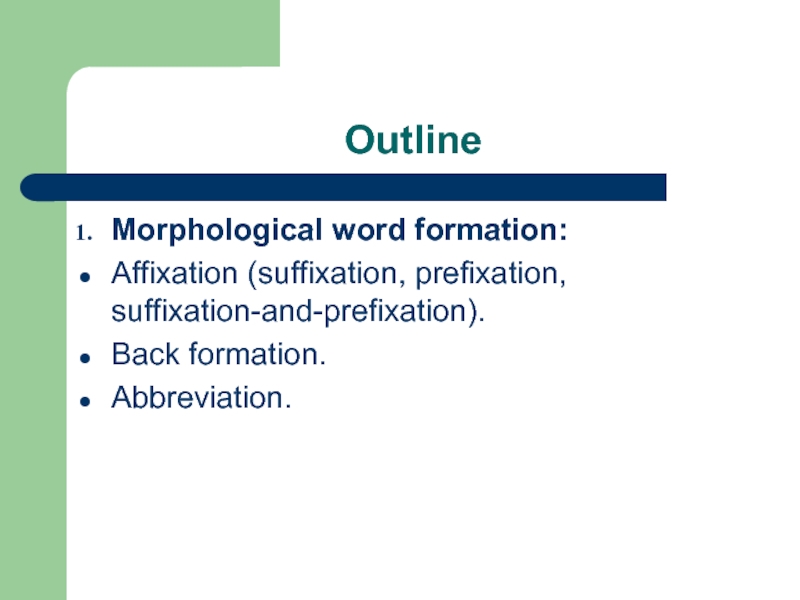
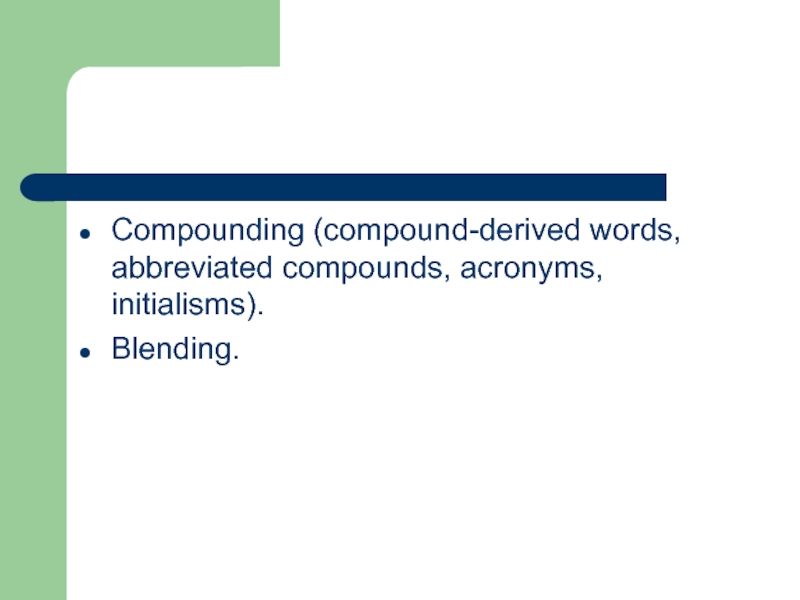
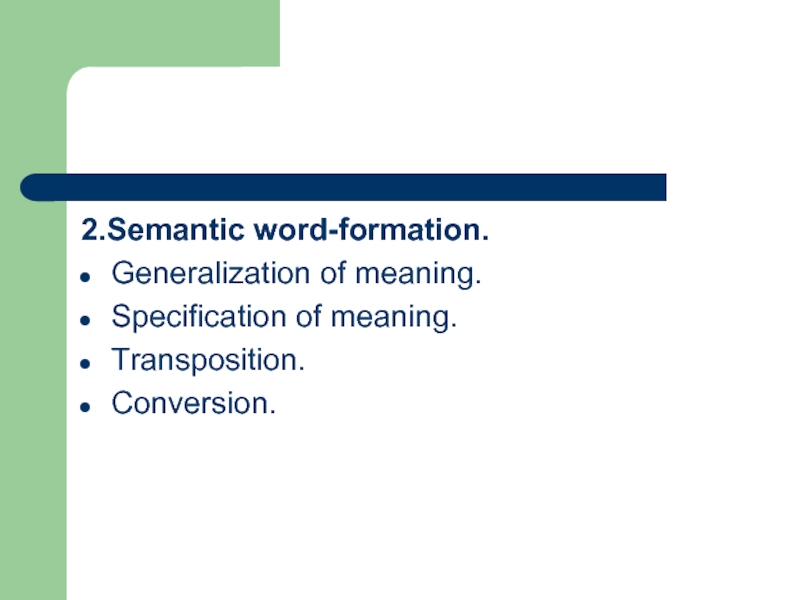
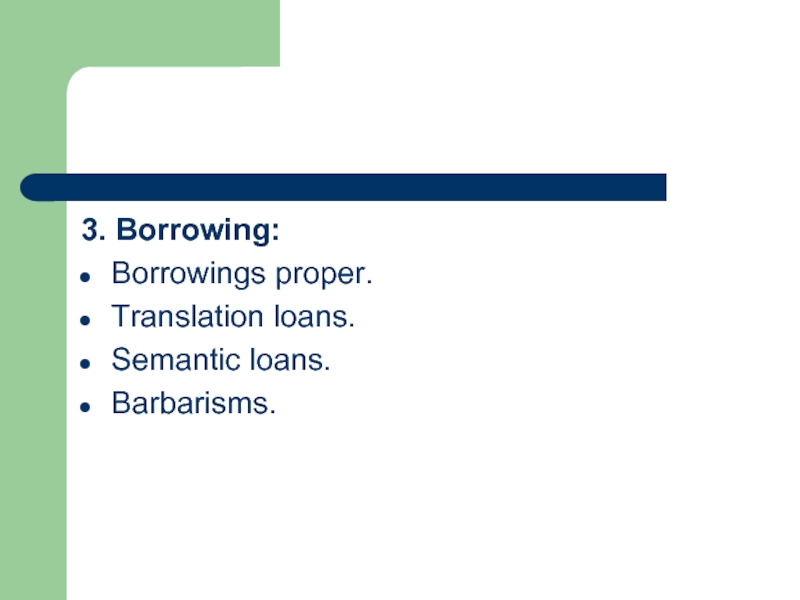
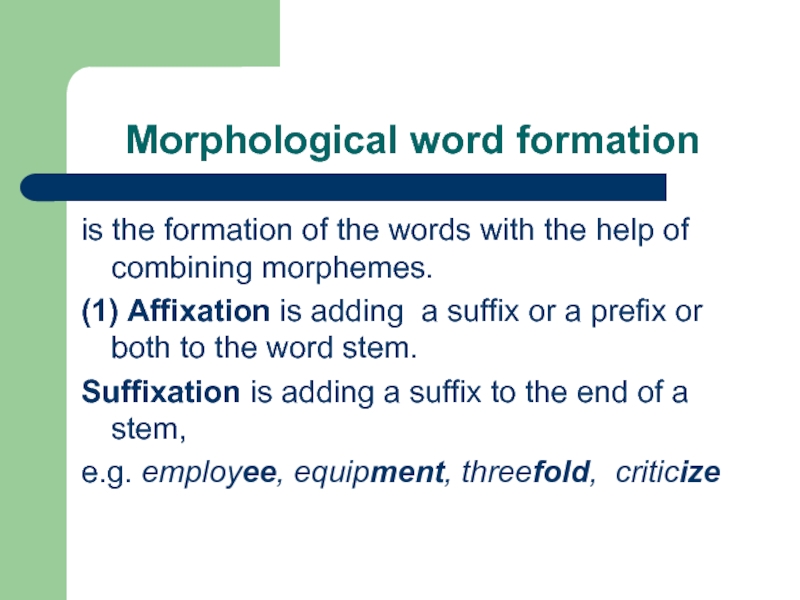
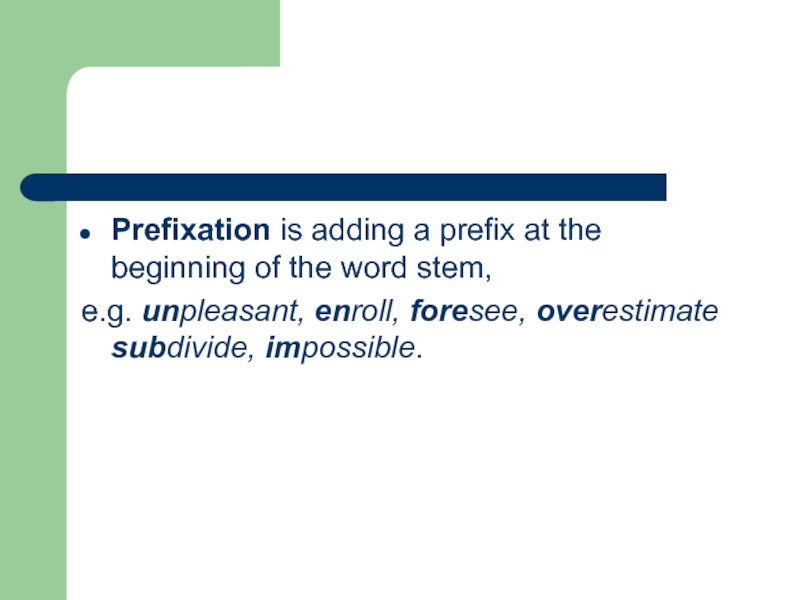
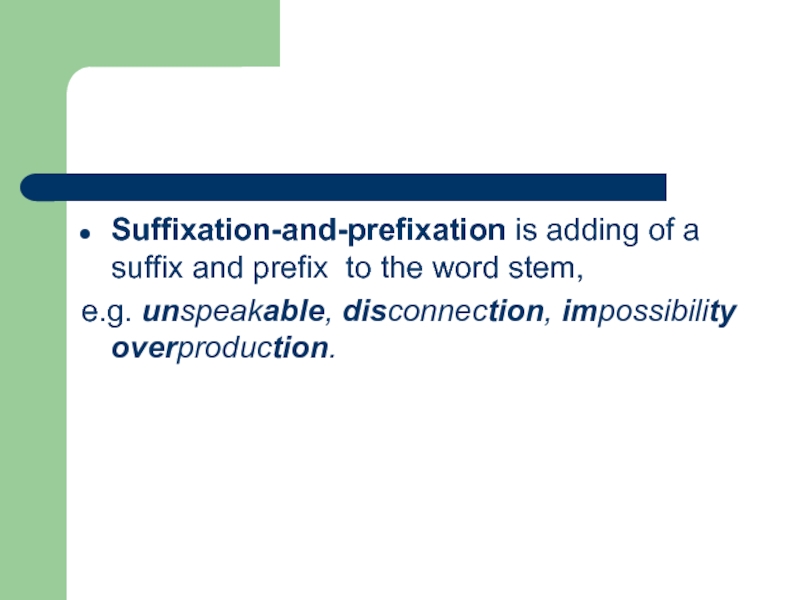
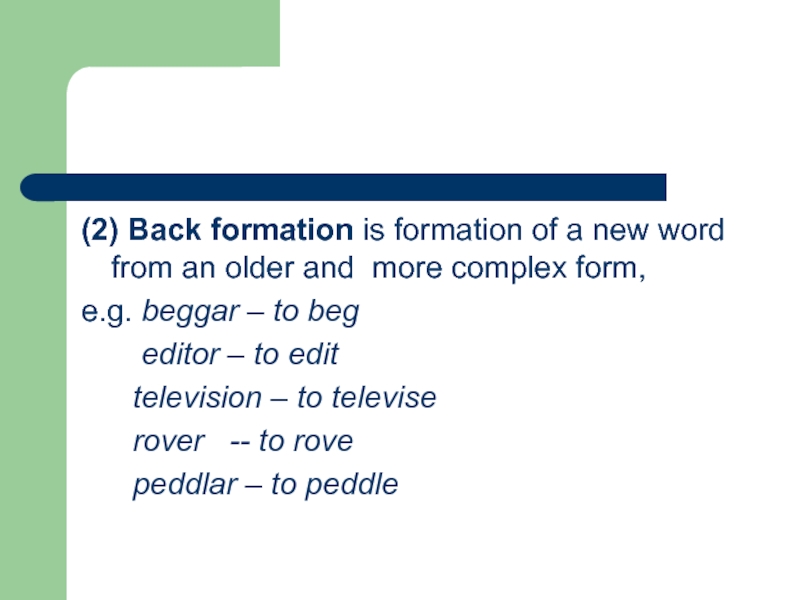
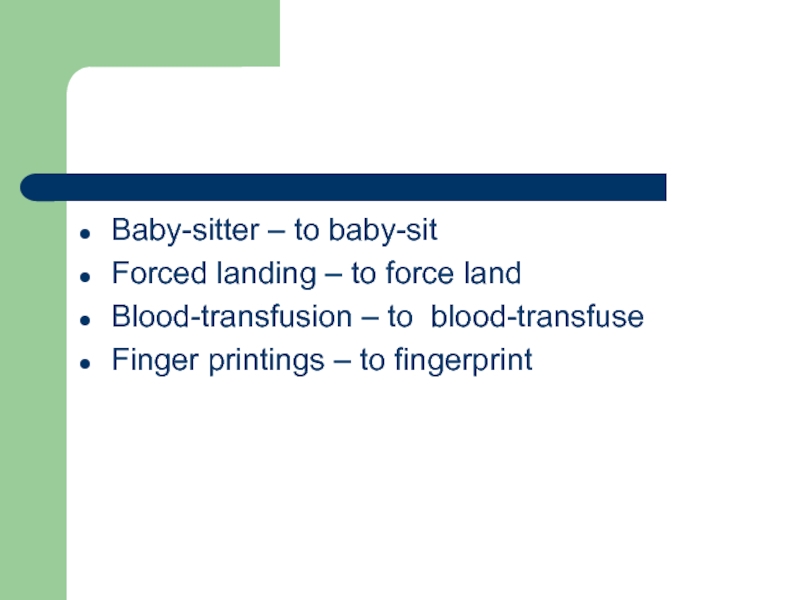
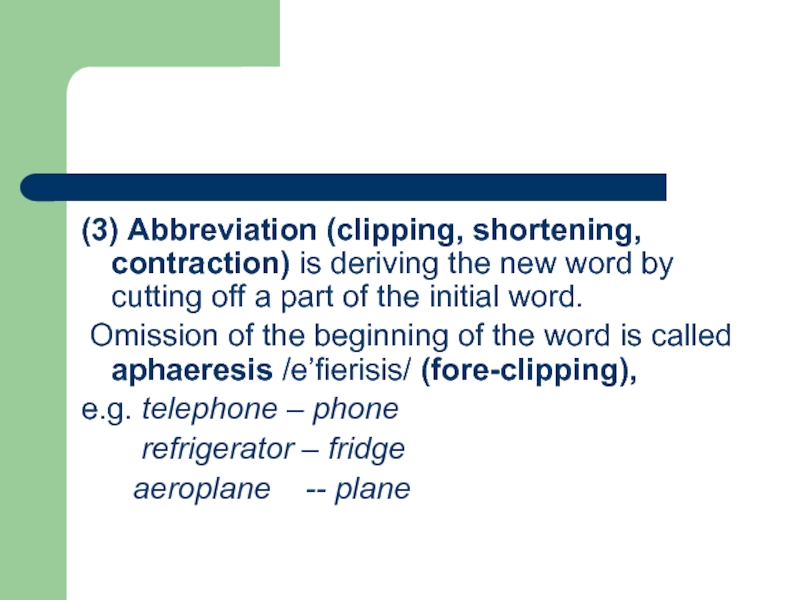

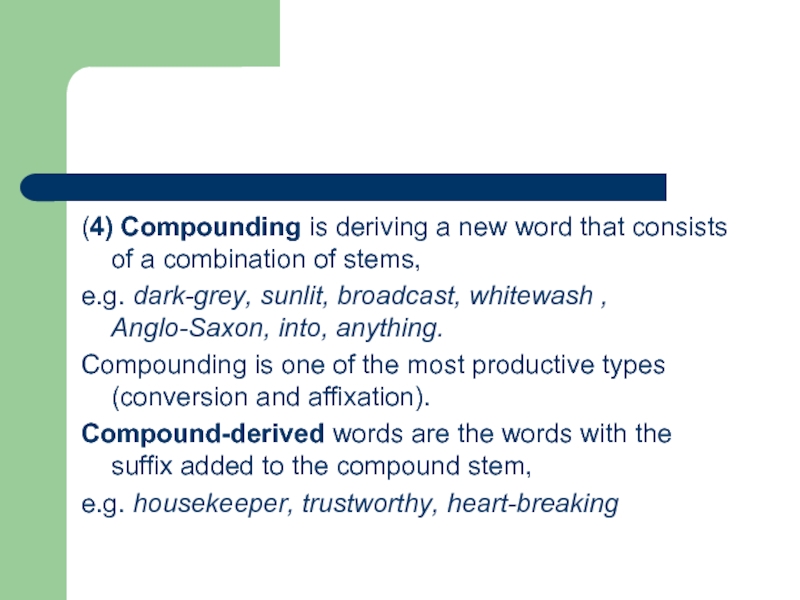
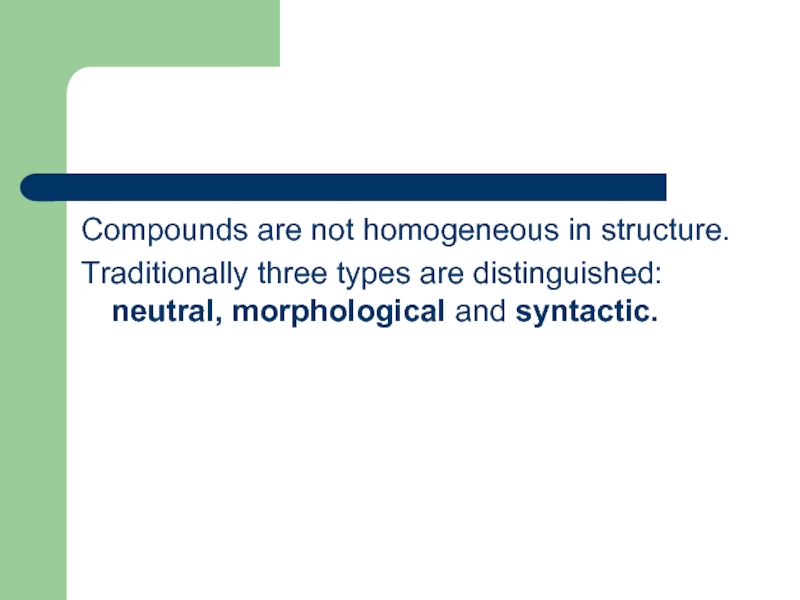



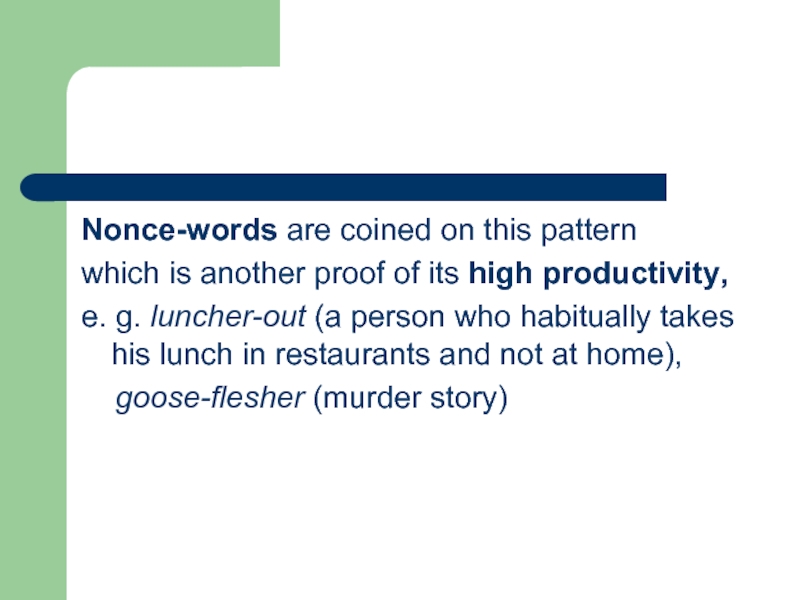

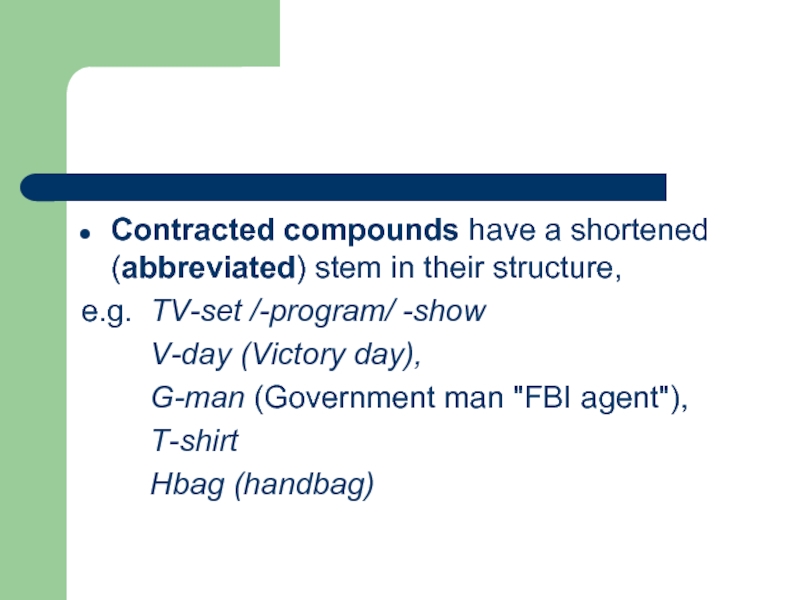
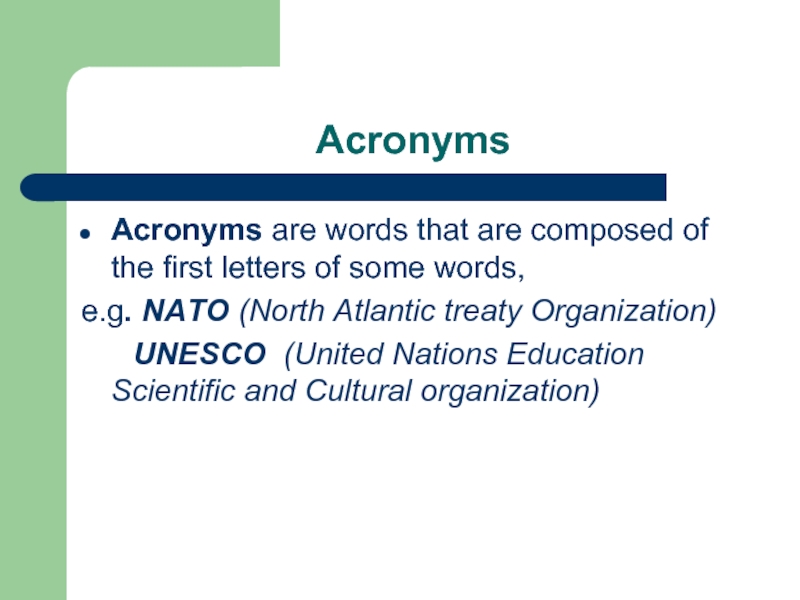
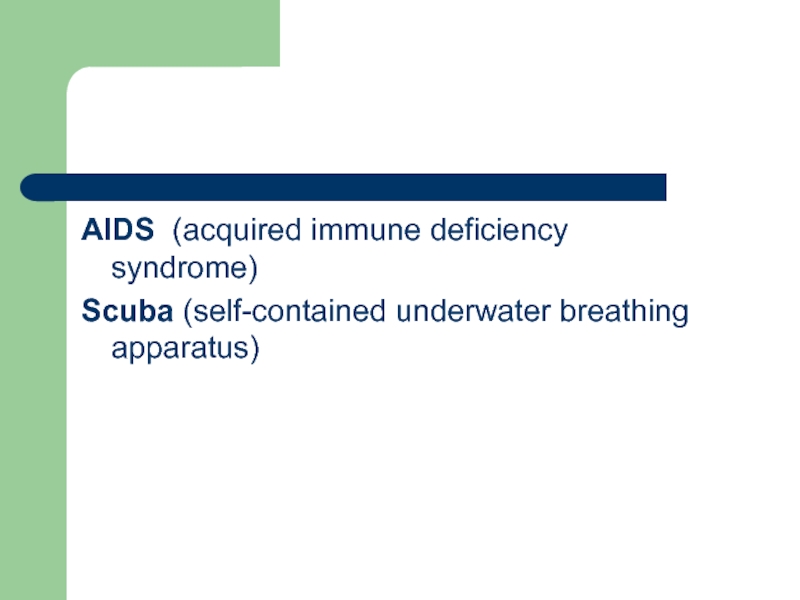
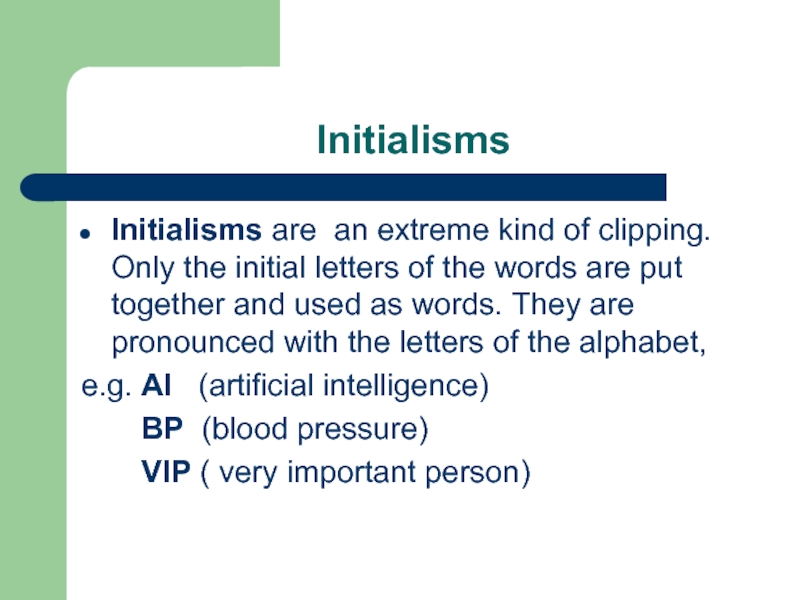

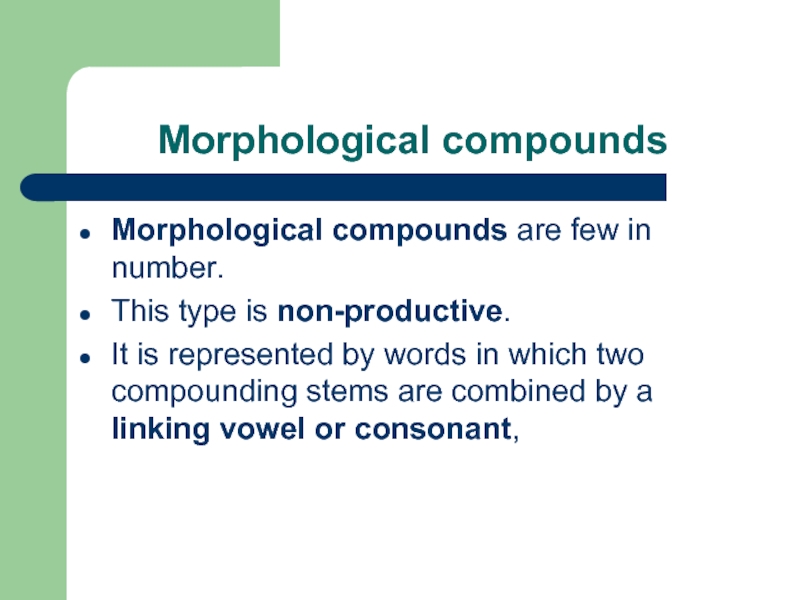
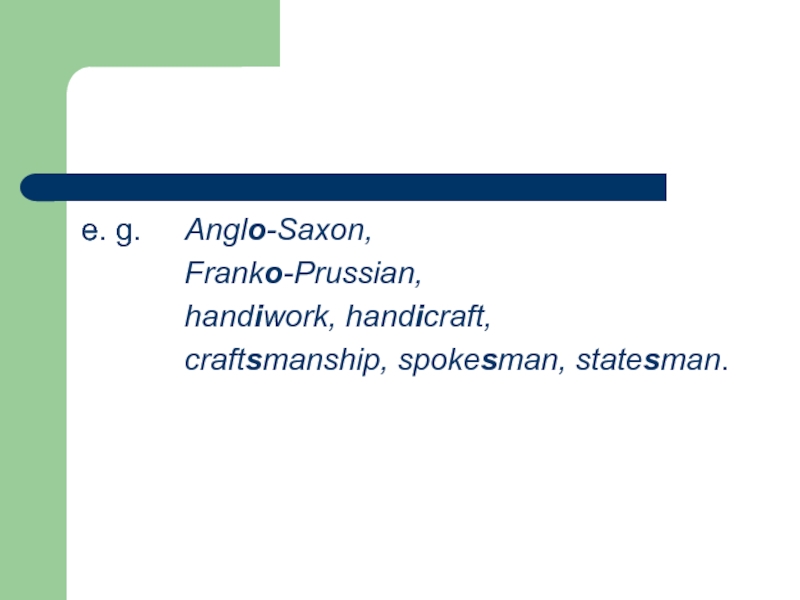
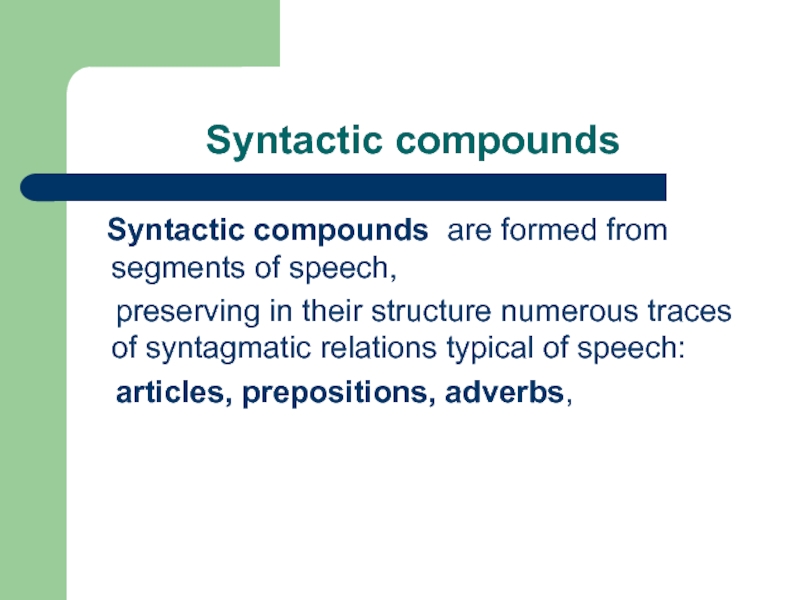
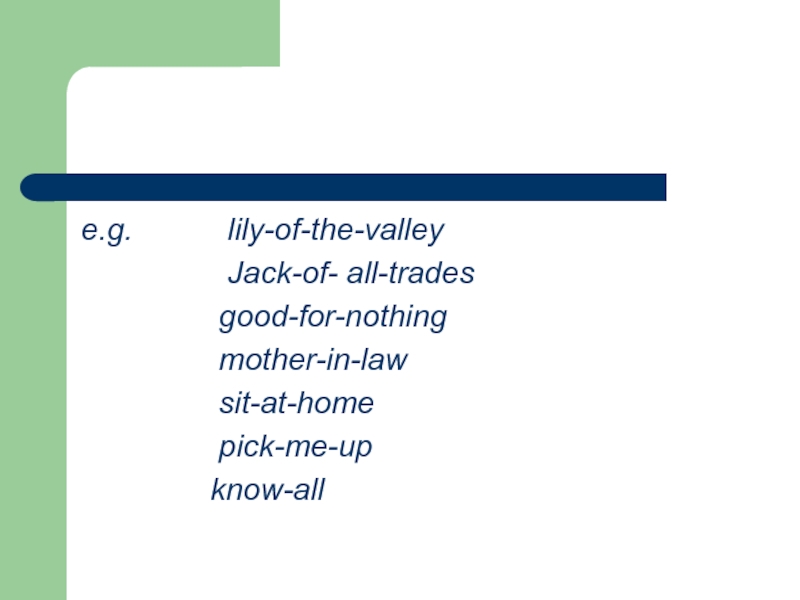
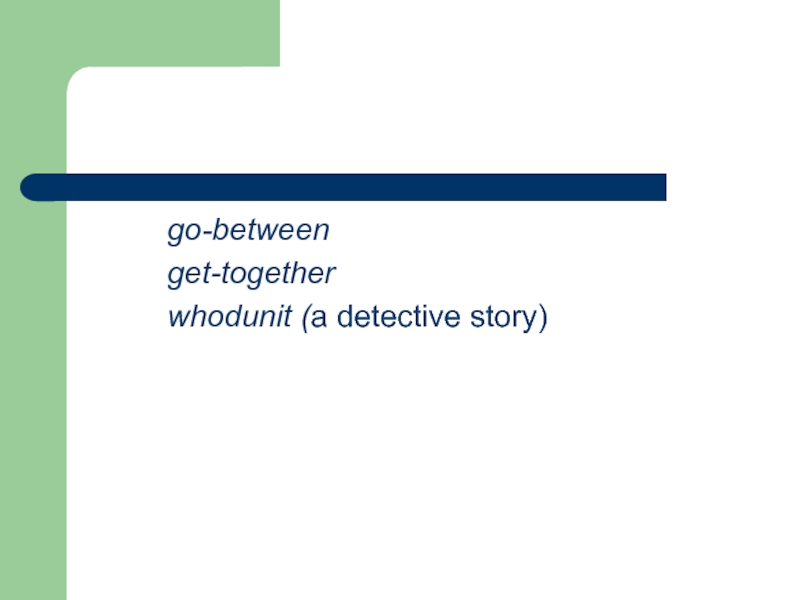
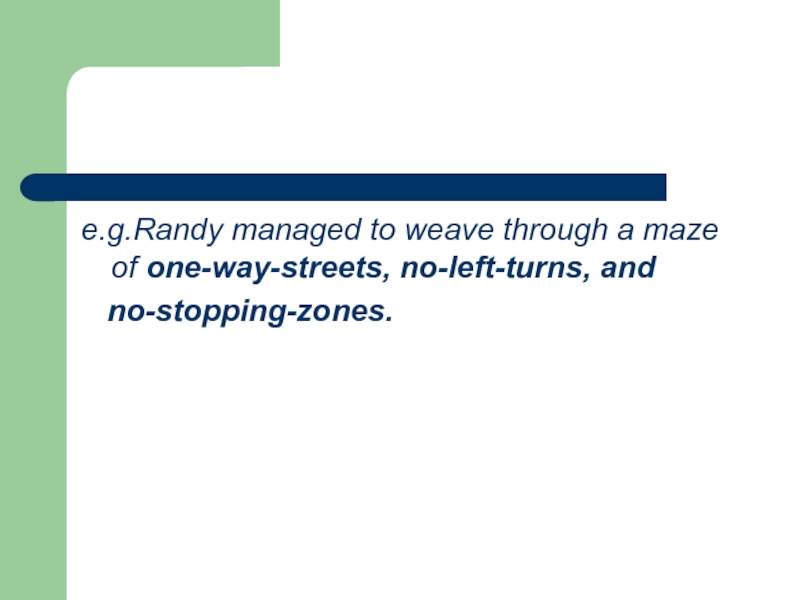
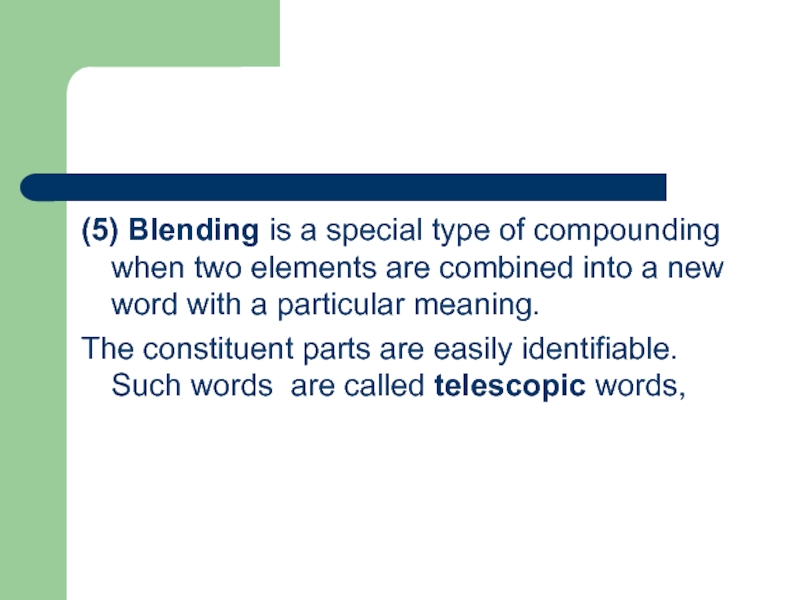
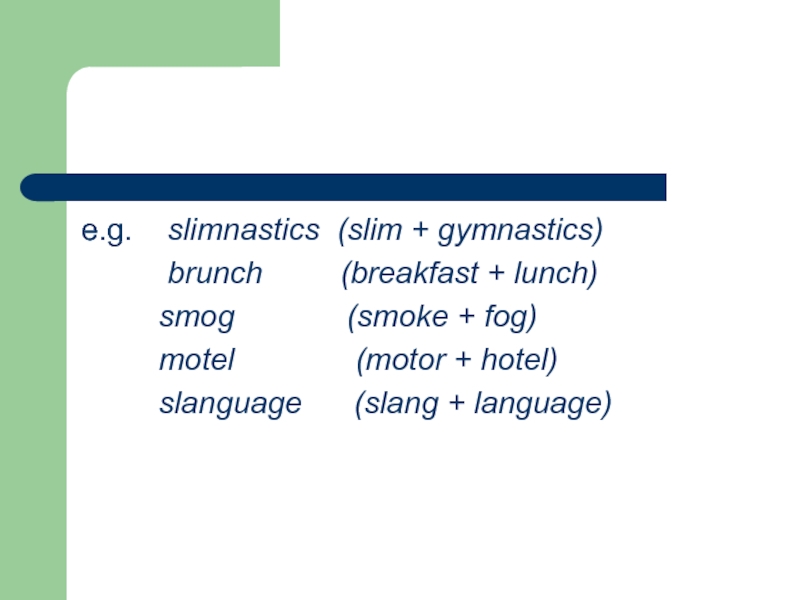
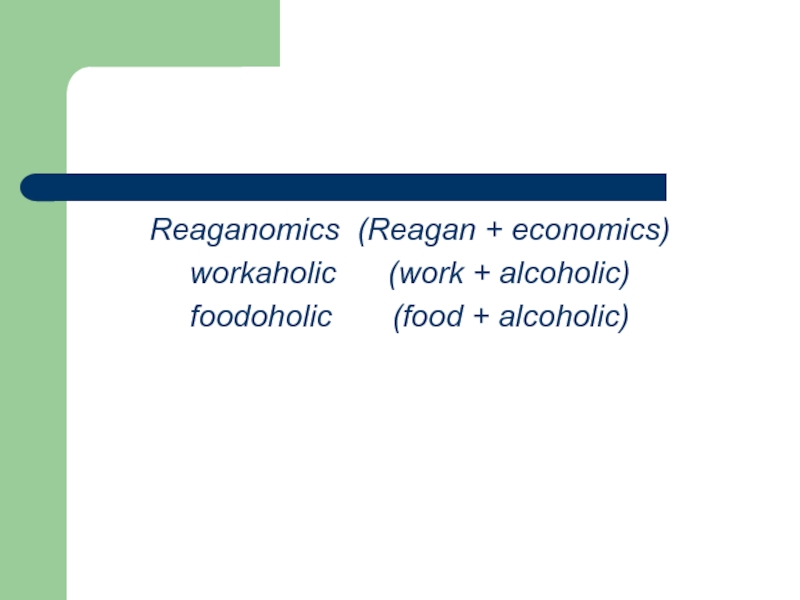
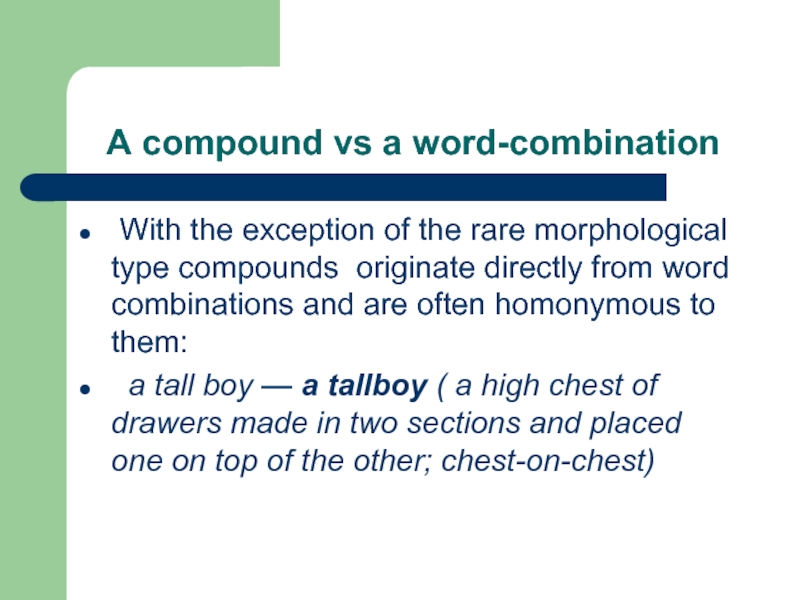
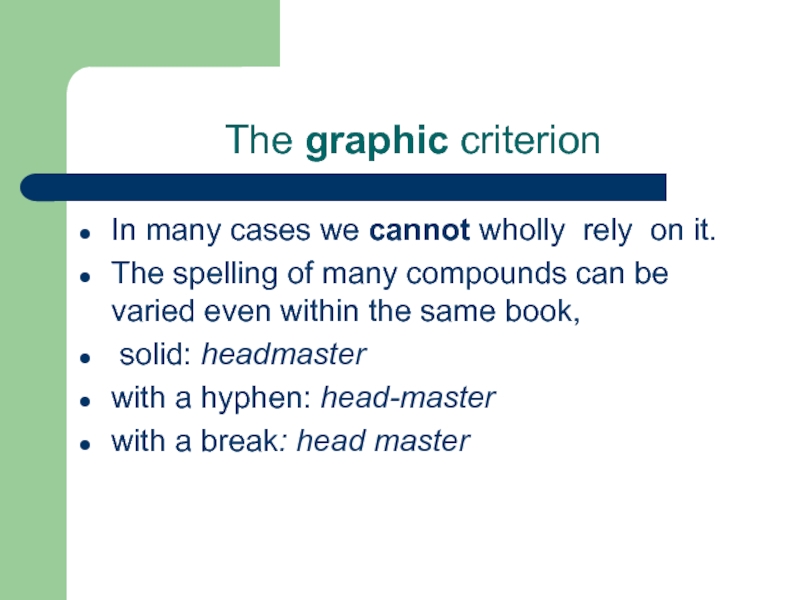
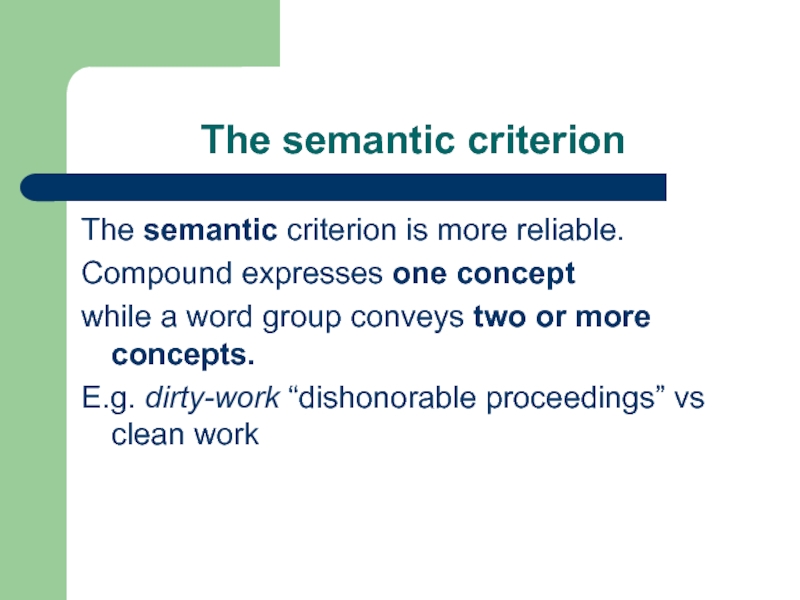
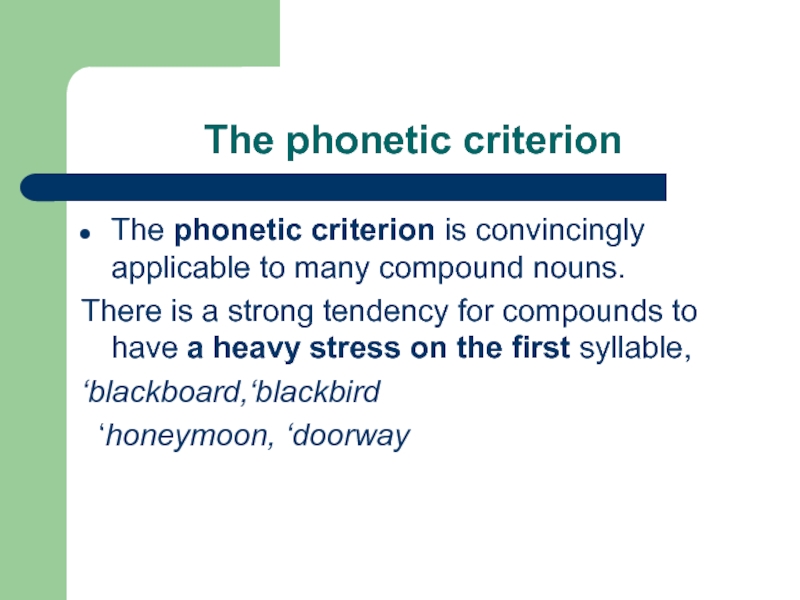
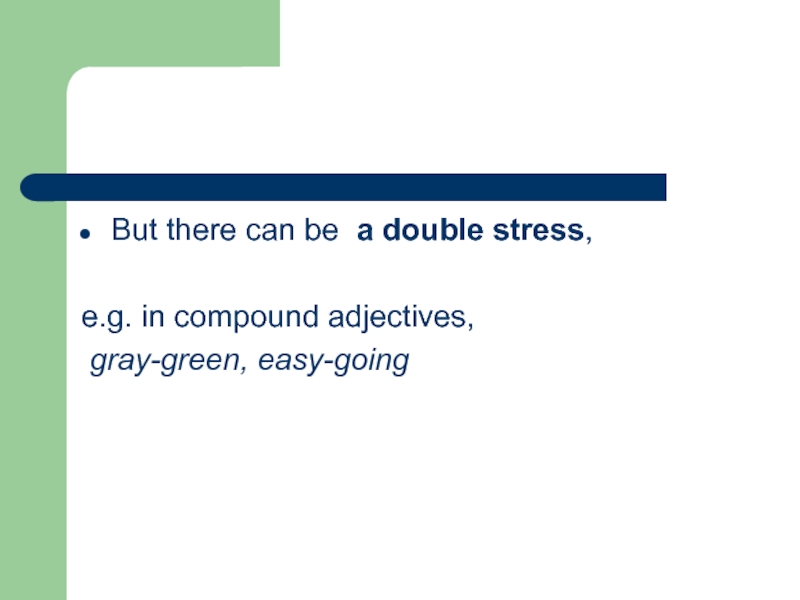

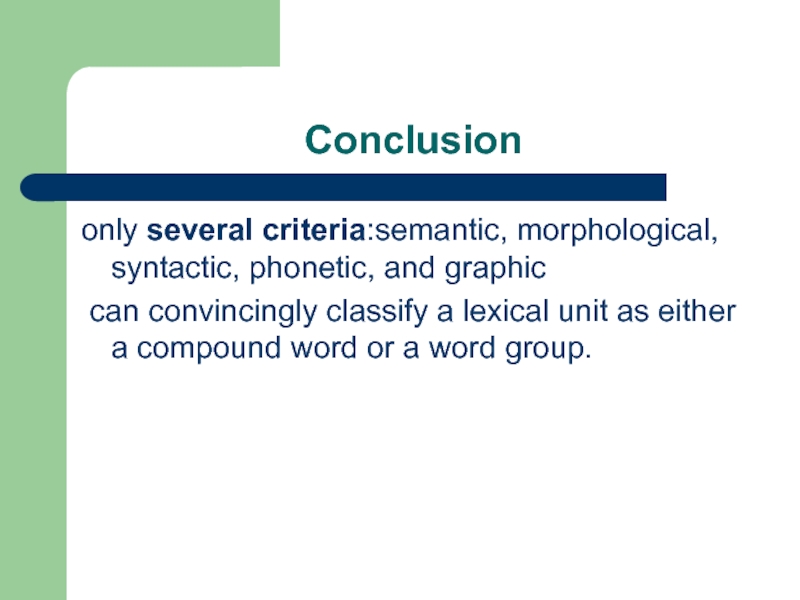
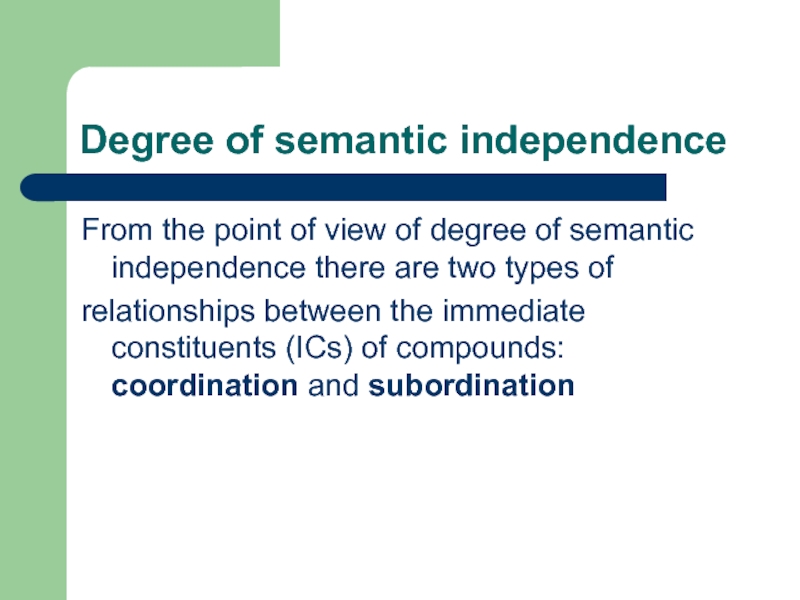
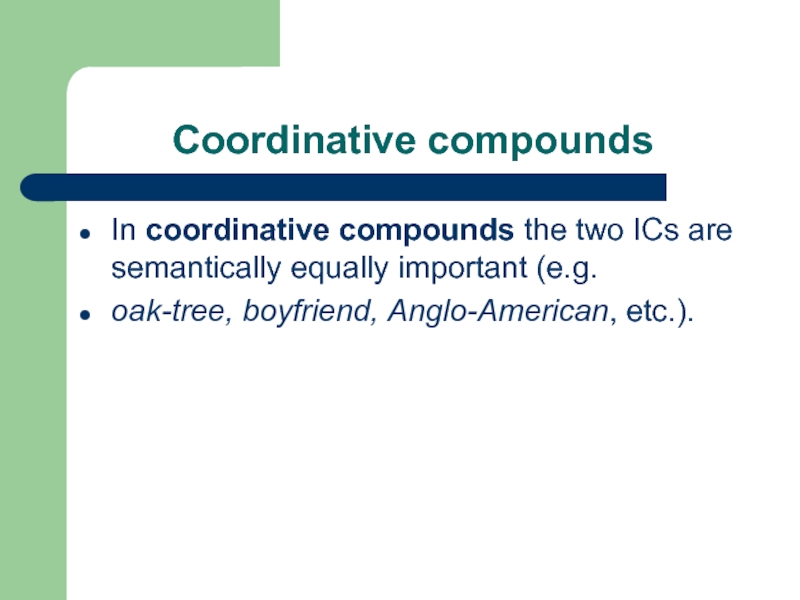
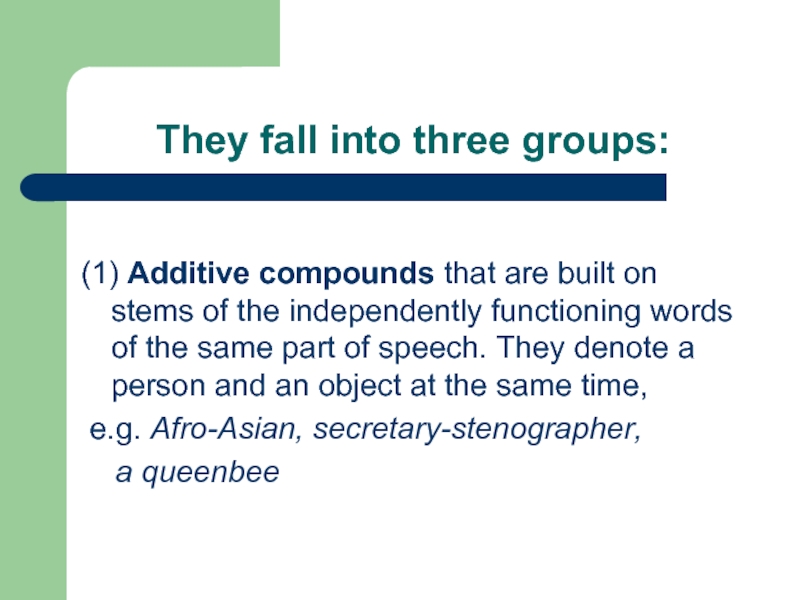
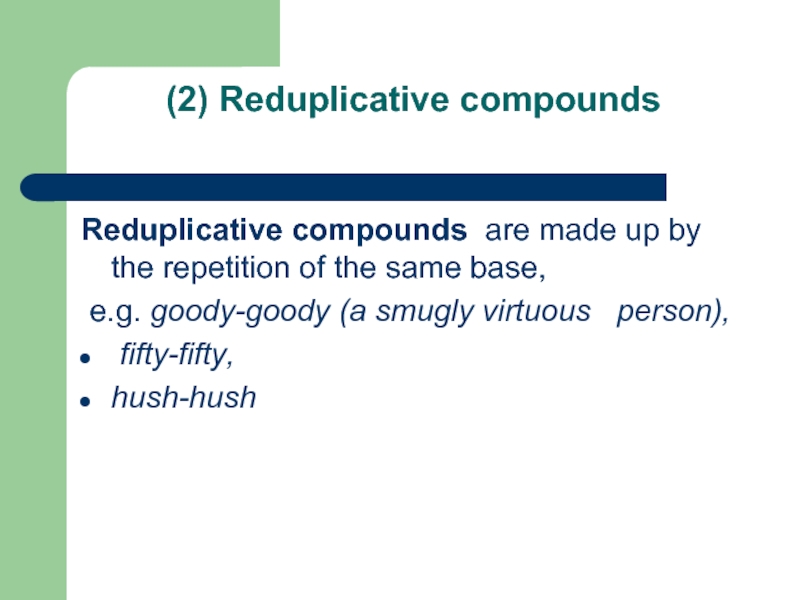
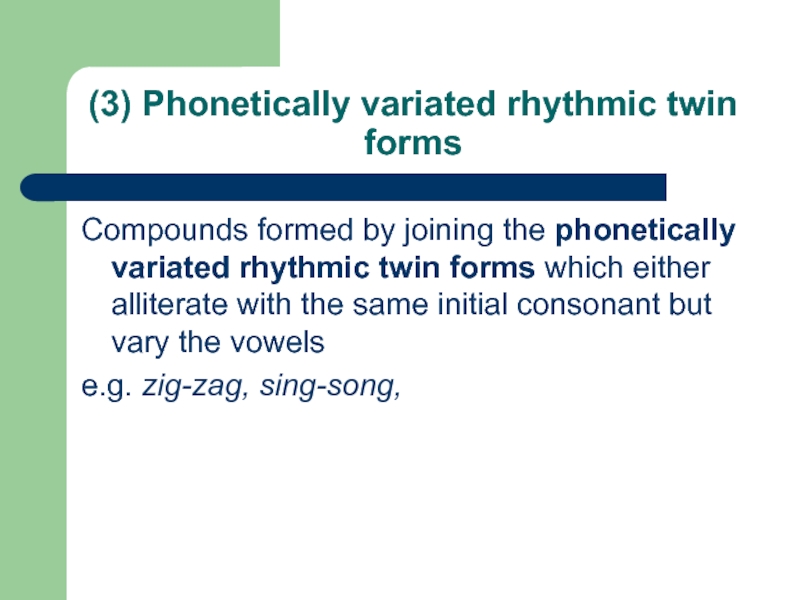
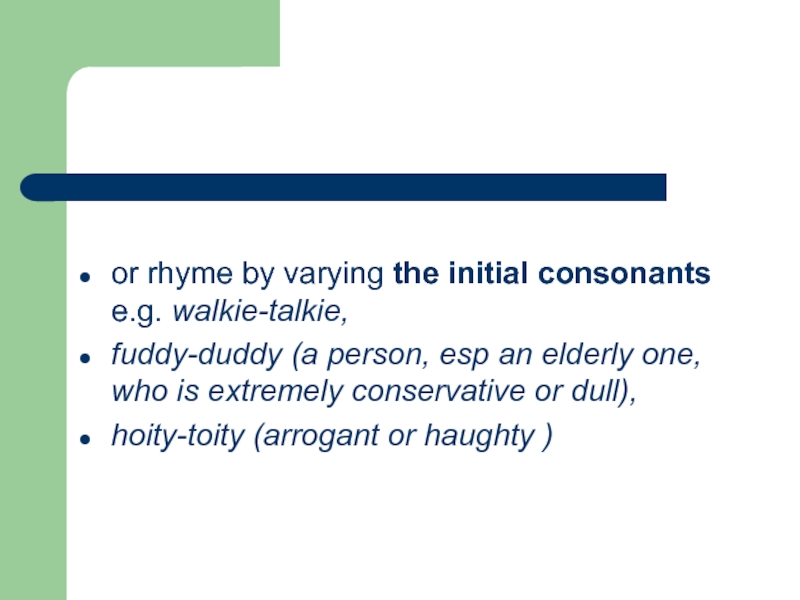
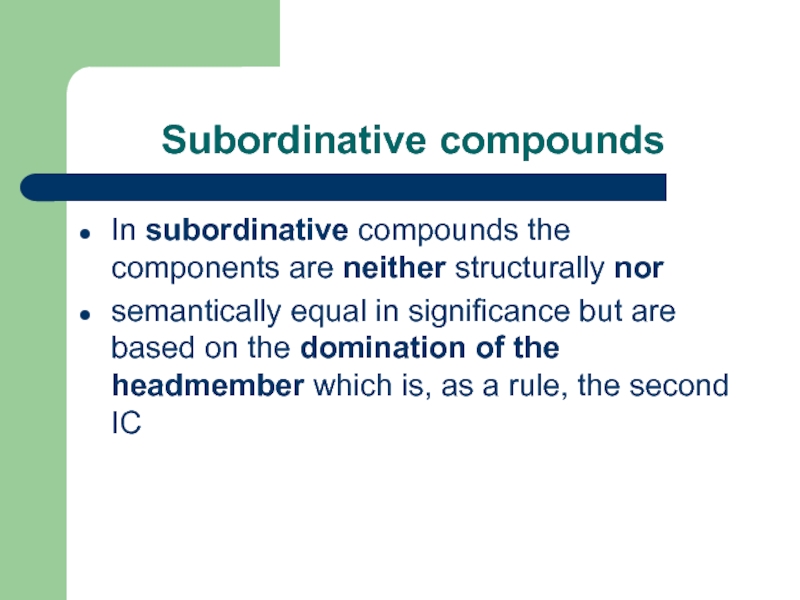
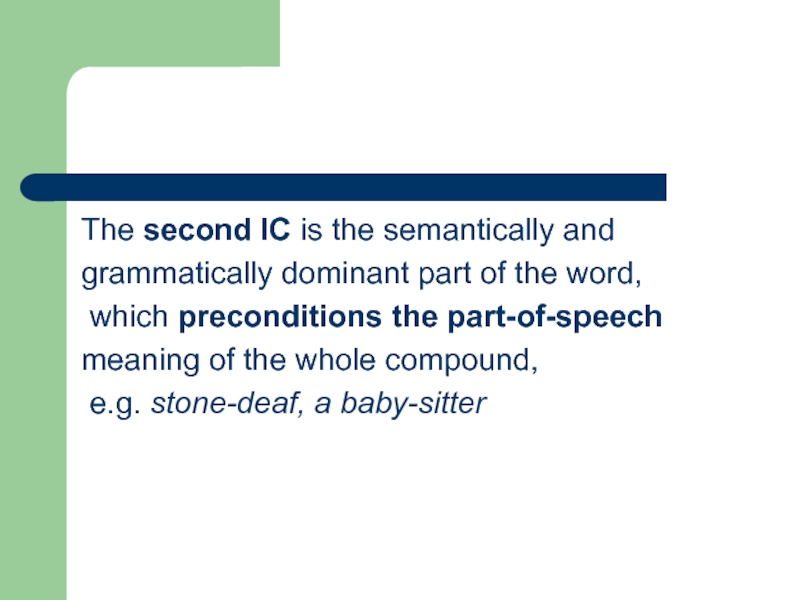
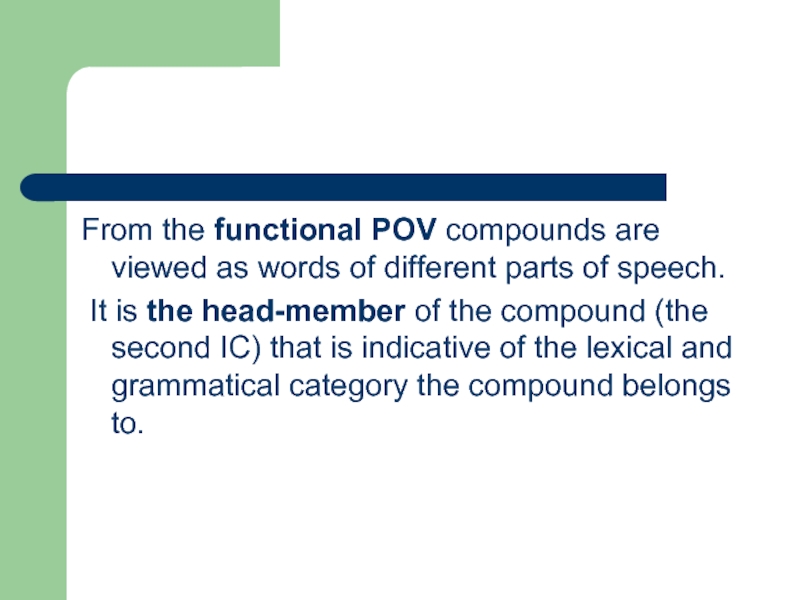
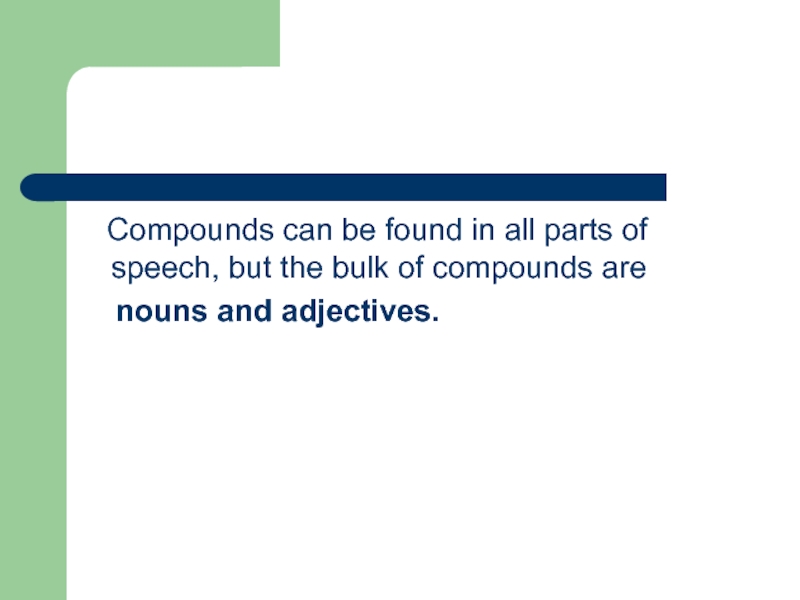
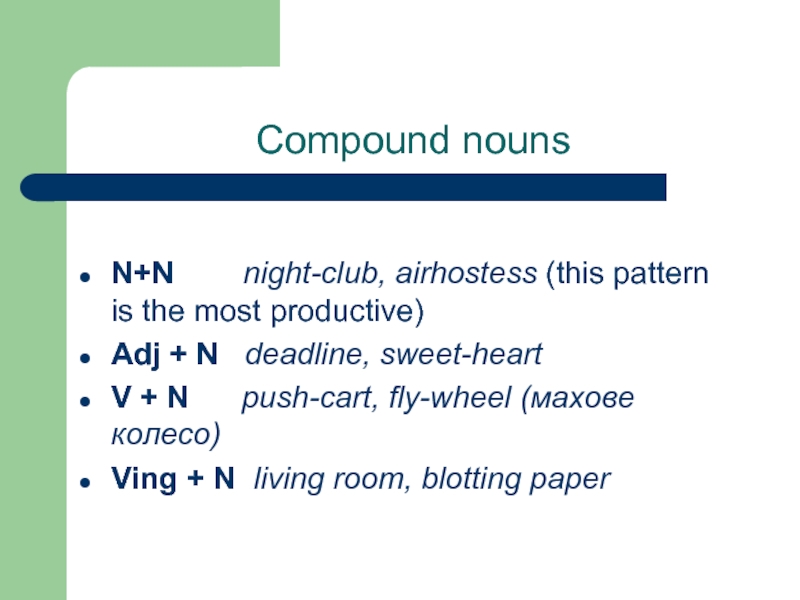
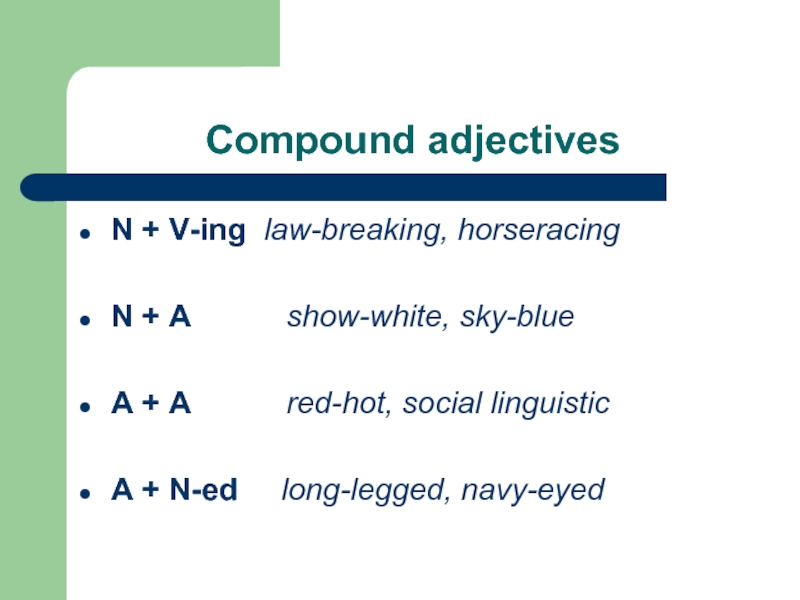
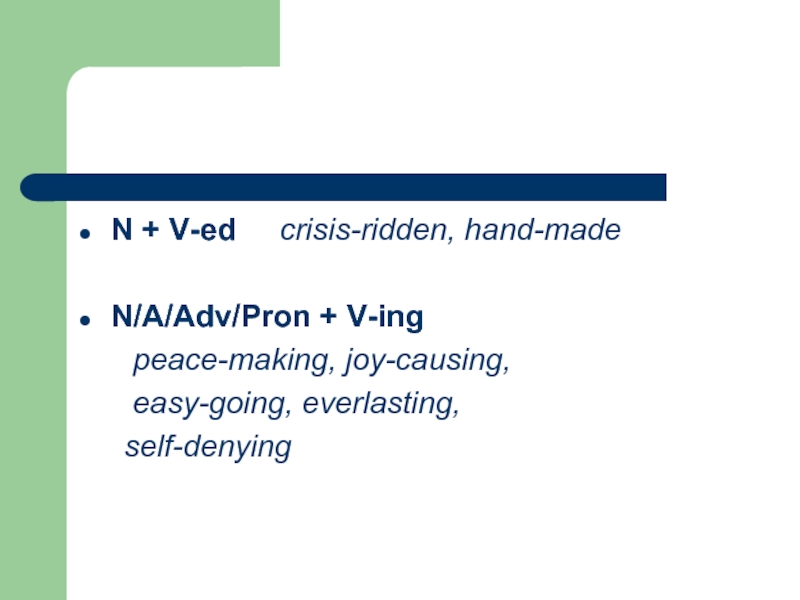
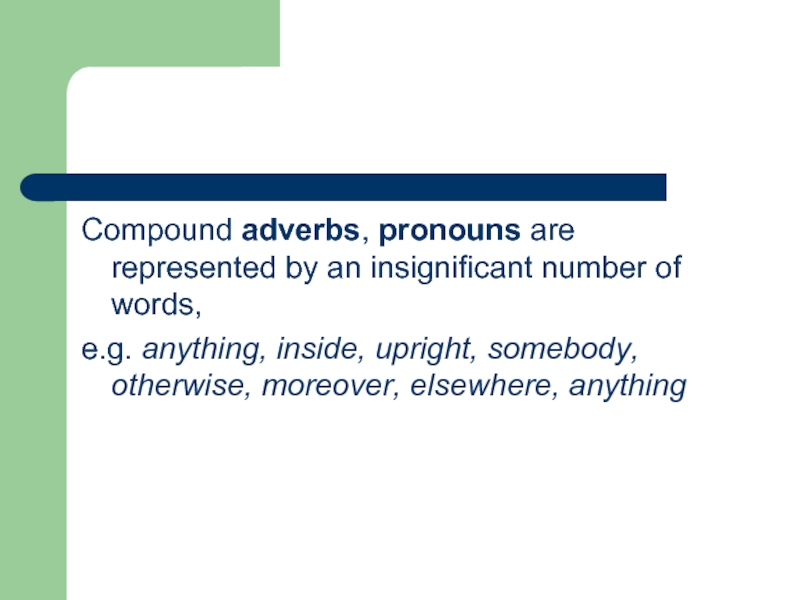
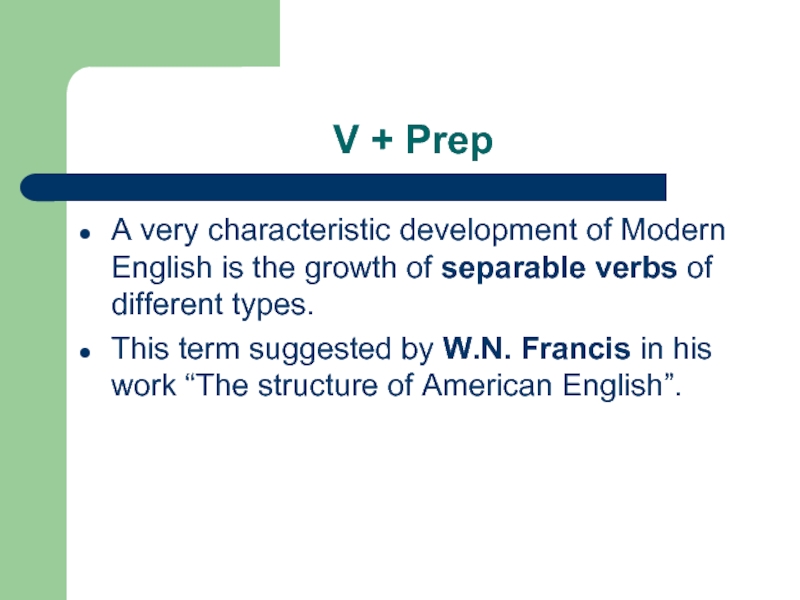
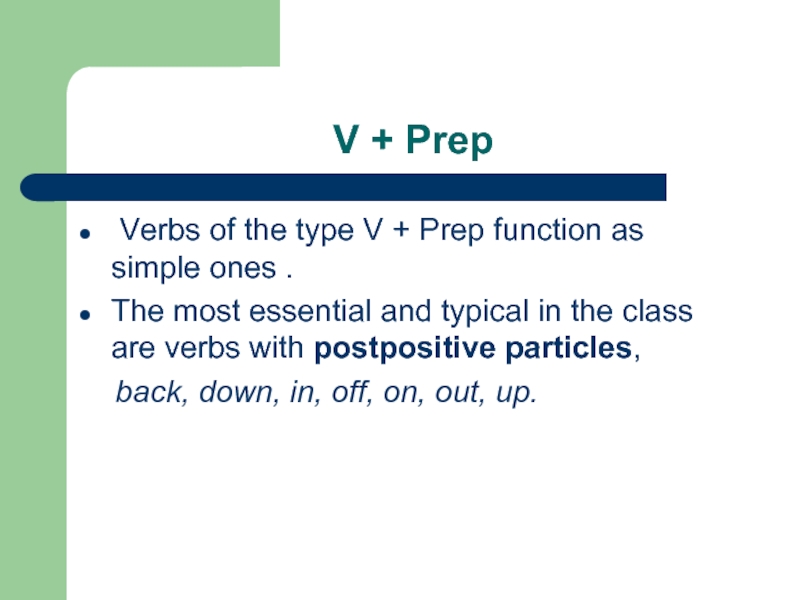
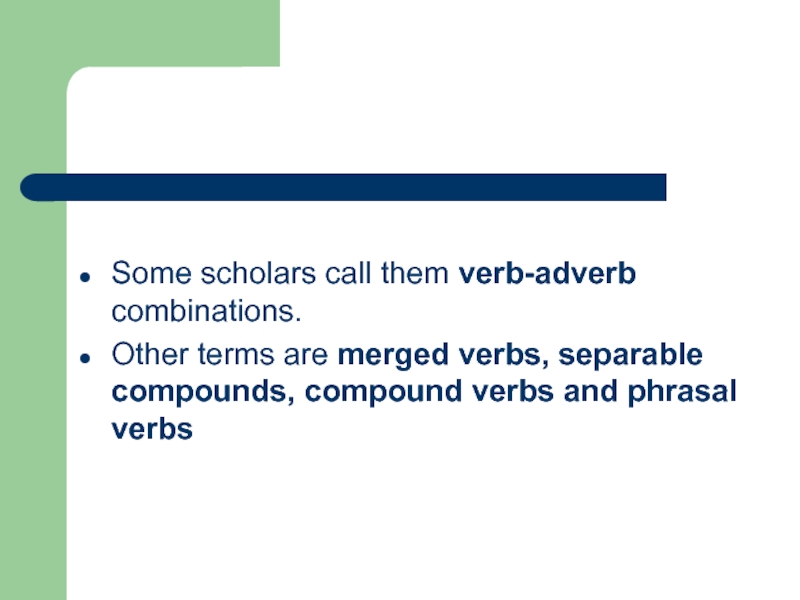
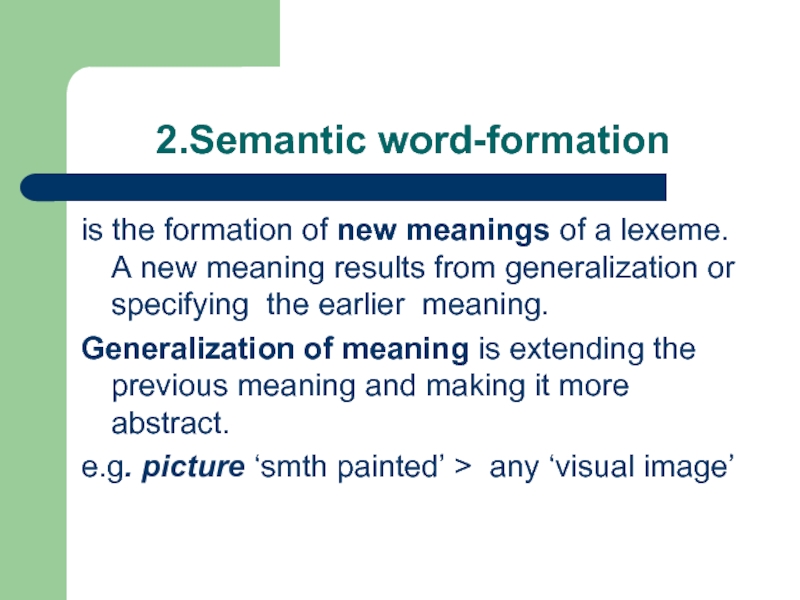

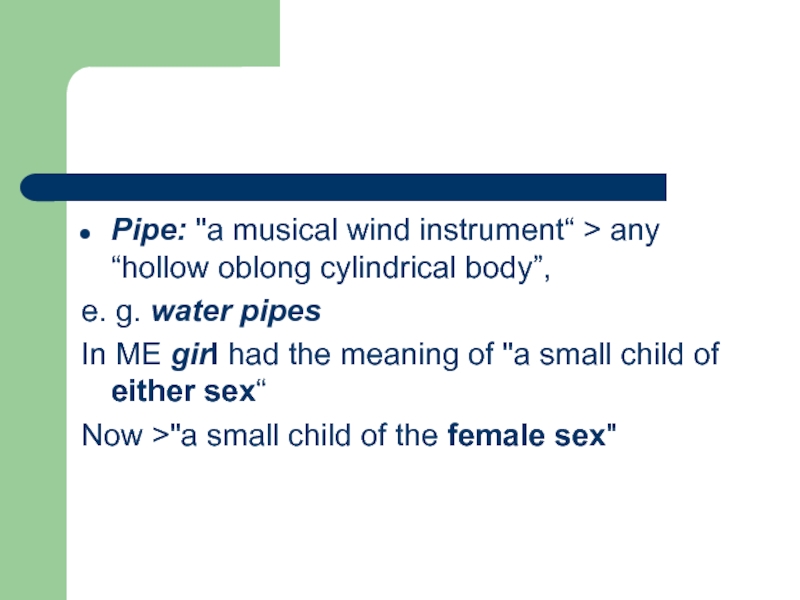 any “hollow oblong cylindrical body”, e. g. water pipesIn" alt="">
any “hollow oblong cylindrical body”, e. g. water pipesIn" alt="">